A Sri Lankan Tale
SIGMA 300-600mm f4 s
Close from afar
Ph. Francesco Riccardo Iacomino
In February this year, as some of you may remember, I was a guest of SIGMA in Japan for an event that would mark a new era for the brand.
It was the announcement of the rebranding — a step into the company’s future, a true day one.
On that occasion, SIGMA also unveiled, for the first time worldwide, the new SIGMA BF camera alongside a series of innovative lenses, including the extraordinary 300-600mm F4 DG OS | Sports.
I looked at that new telephoto zoom with curiosity and a touch of reverence — a blend of power and engineering unlike anything I had seen before.

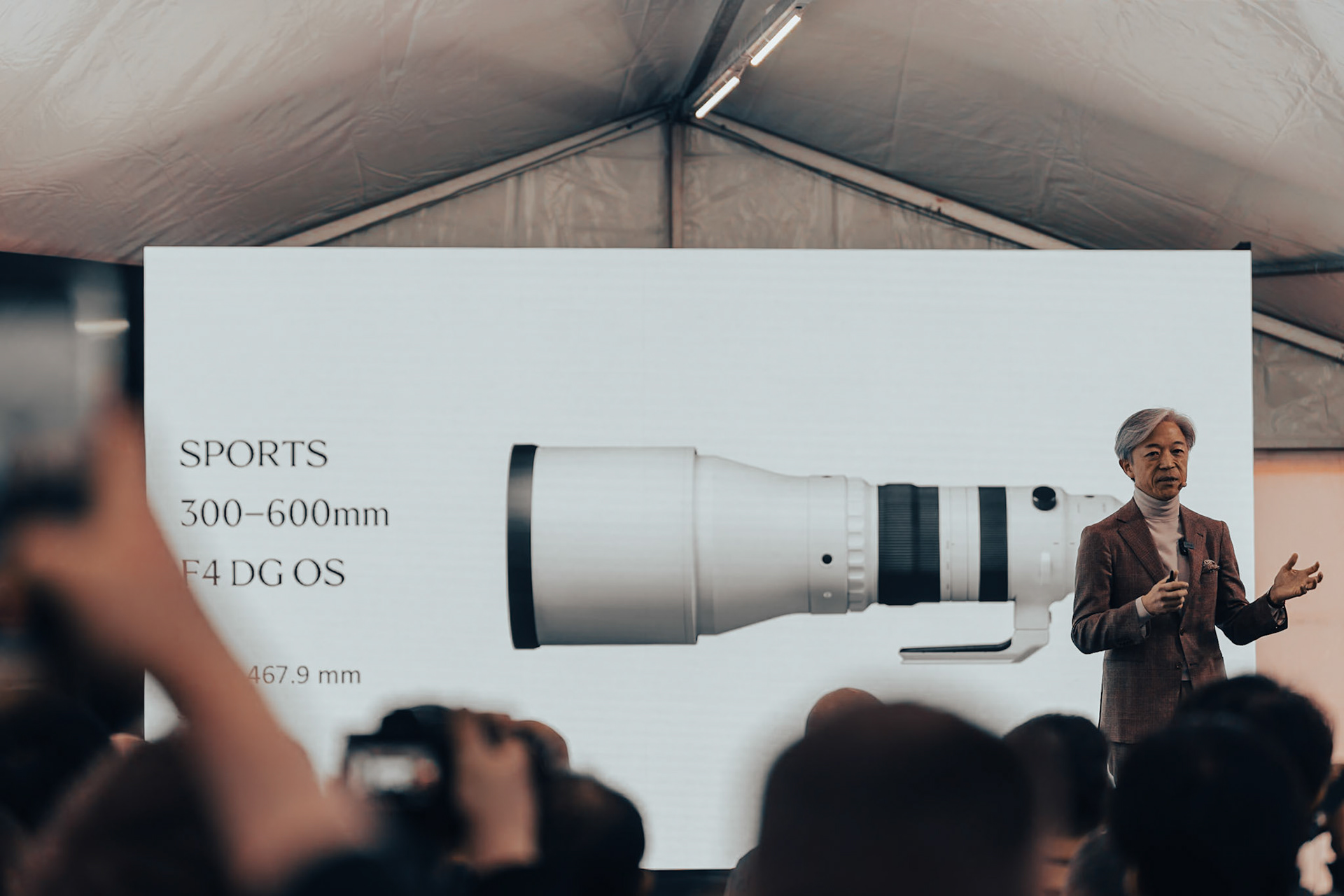

In August, amid the wild landscapes of Sri Lanka, I finally had the chance to put it to the test!

I tested it together with the Sony A7R V, taking full advantage of its 61-megapixel resolution and cutting-edge AF subject recognition system to push beyond the limits of the scene.
Each frame holds an incredible amount of detail, allowing for significant cropping without visible loss — a remarkable creative freedom, especially for photographing distant, constantly moving subjects.
Despite its extreme focal range, the SIGMA 300-600mm F4 DG OS | Sports proved surprisingly well-balanced in real-world use.
The weight — around 4 kg — is manageable, especially considering the constant F4 aperture throughout the zoom range and the solid construction in magnesium alloy and CFRP.
I shot almost entirely hand-held, or resting the lens on the bars of the safari vehicles.
The grip feels secure, the zoom ring smooth yet precise, and the OS2 optical stabilizer performs superbly even at full extension, delivering sharp images right at the limits of the focal range.
It’s not a lens designed for traveling light, but for those who seek reach, definition, and total control — the kind of tool that, once in your hands, changes the very perception of what can truly be photographed from afar.
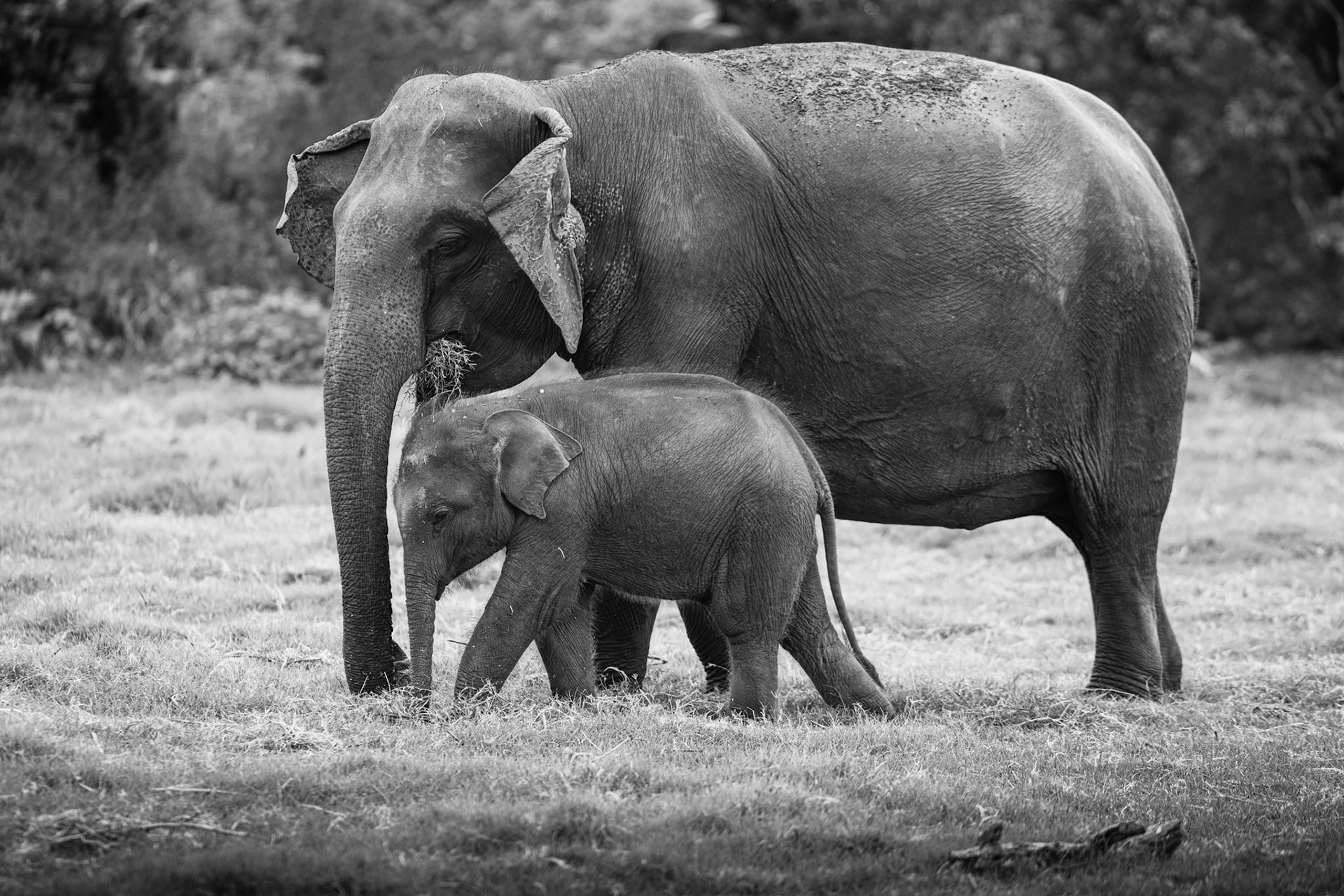
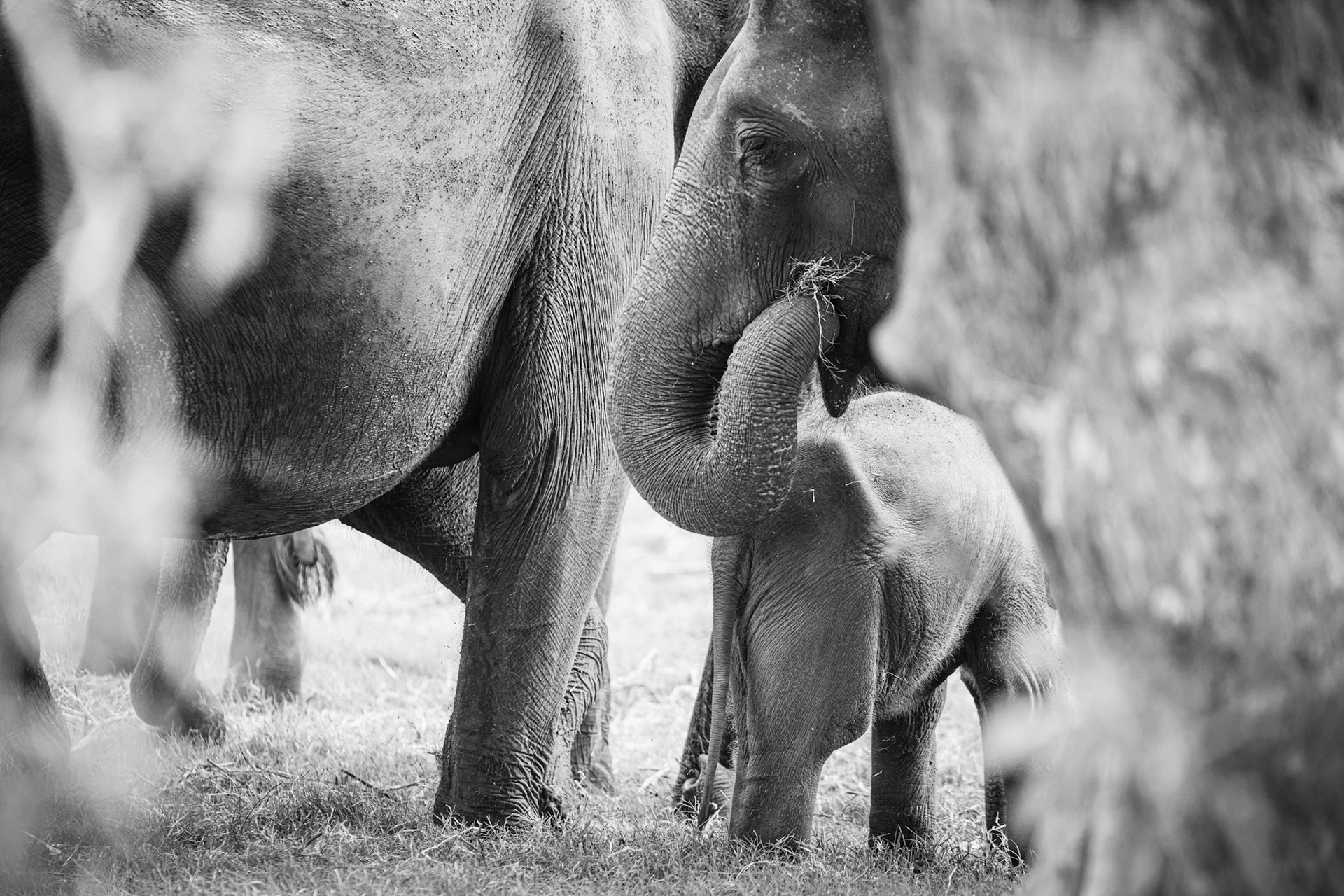
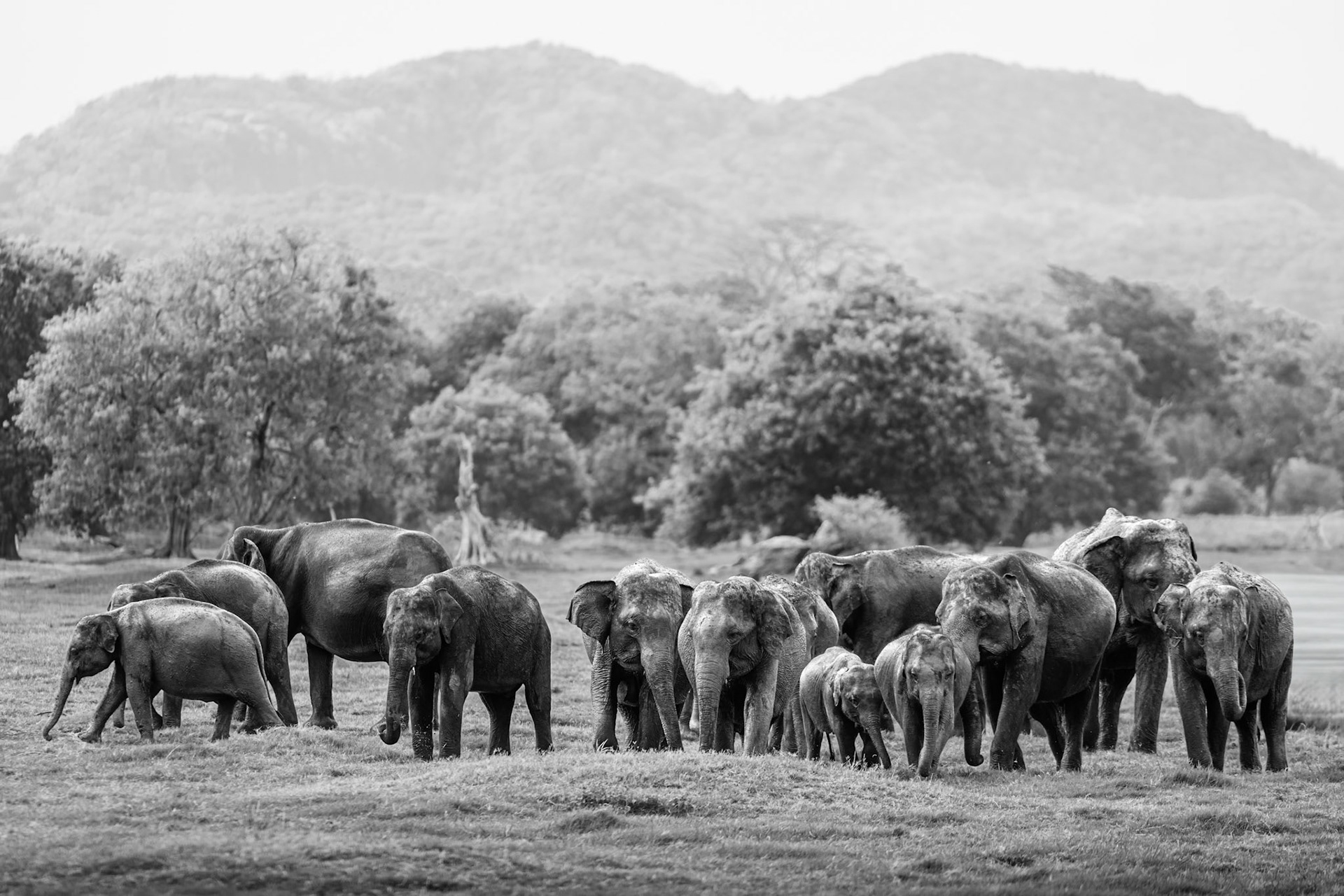
Minneriya – The Gathering
My first safari in Sri Lanka took place in Minneriya National Park, during The Gathering — the largest congregation of Asian elephants in the world.
Every year, between July and October, hundreds of elephants gather around the artificial Minneriya Tank, drawn by the remaining water of the dry season.
It’s a silent, powerful spectacle, where nature itself seems to hold its breath.
I’m on a safari jeep, the first of many that will mark this journey.
Resting the camera on the vehicle’s bars makes it easier to handle the weight of the SIGMA 300-600mm F4 DG OS | Sports, a lens that, in situations like this, reveals its true calling.
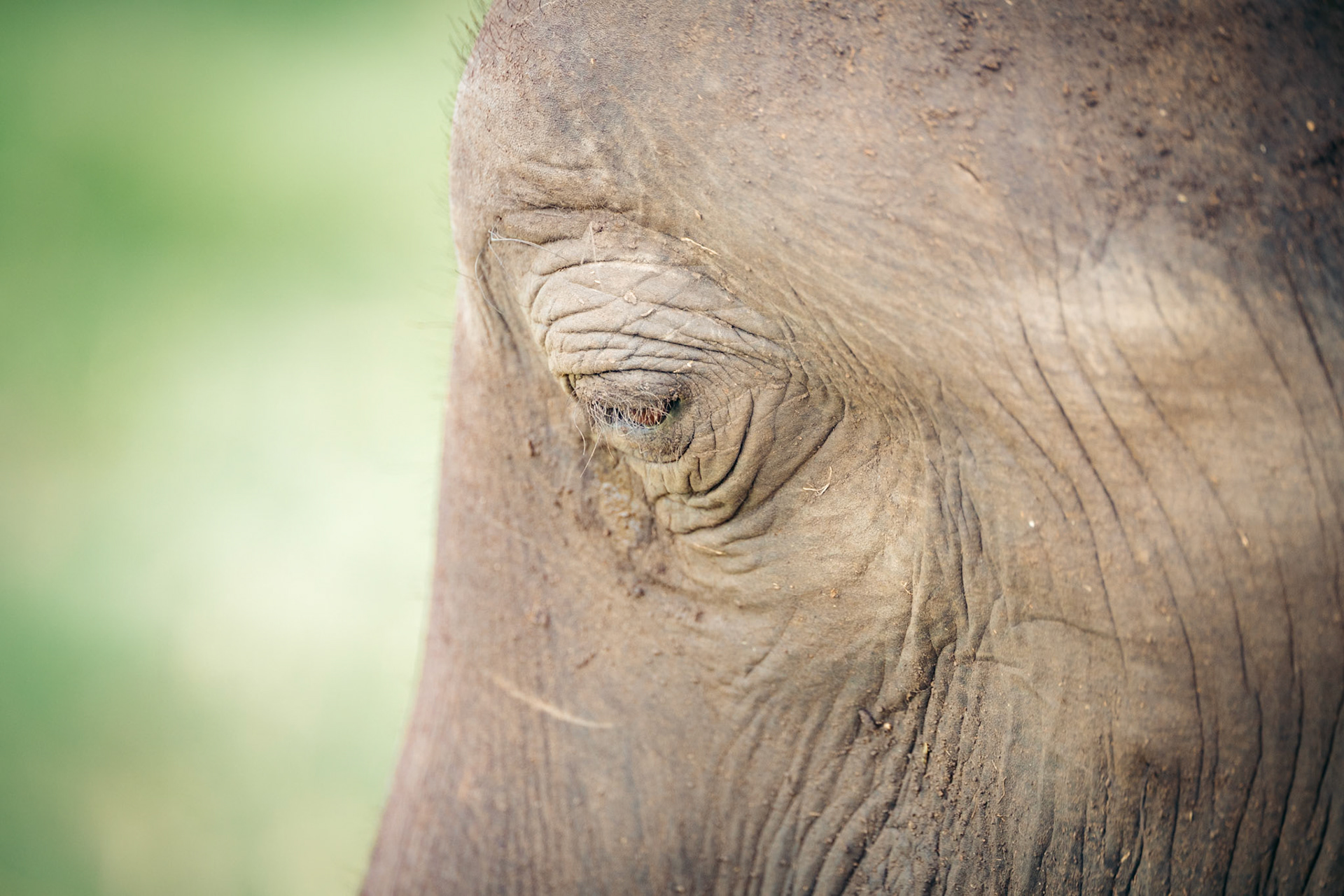
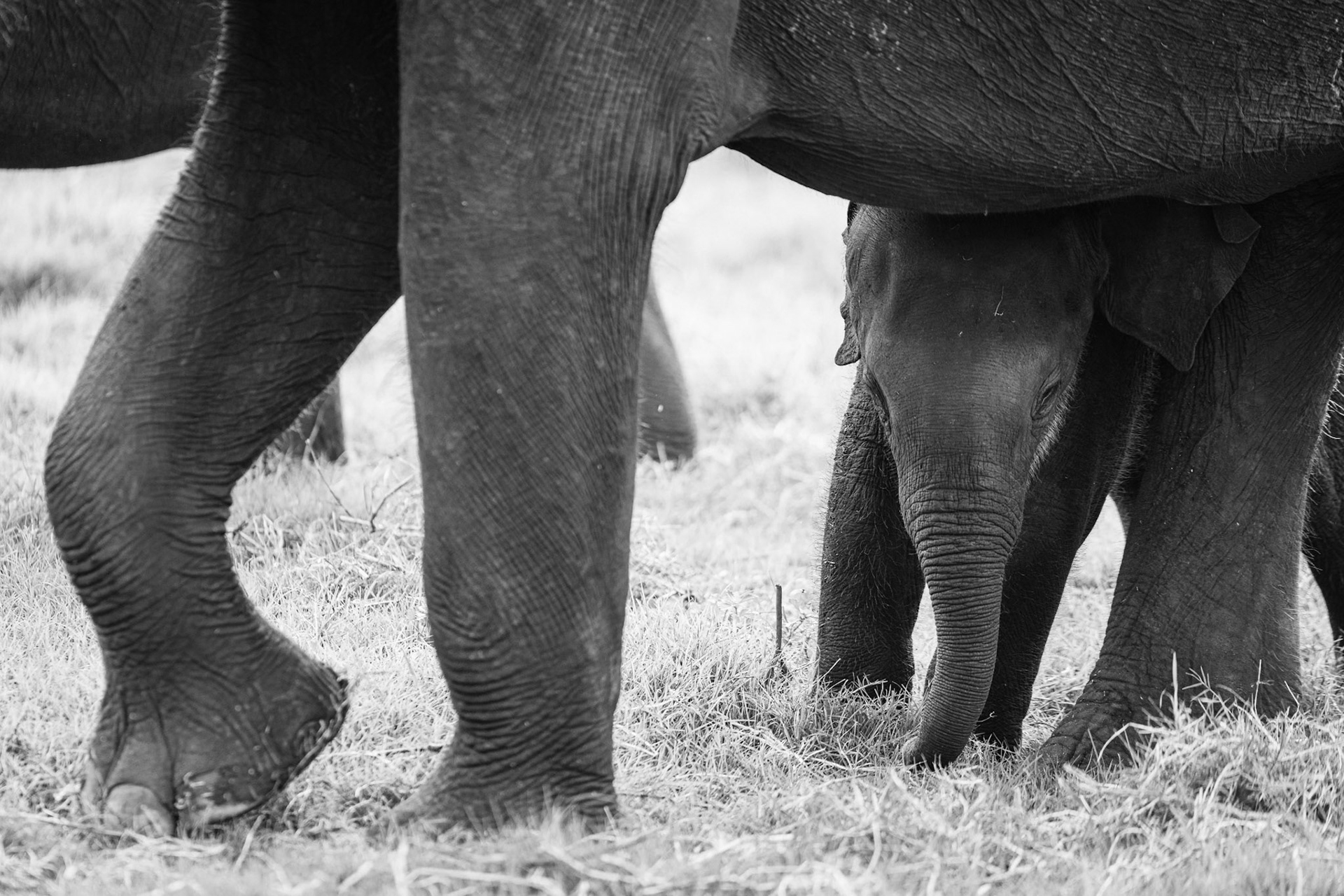
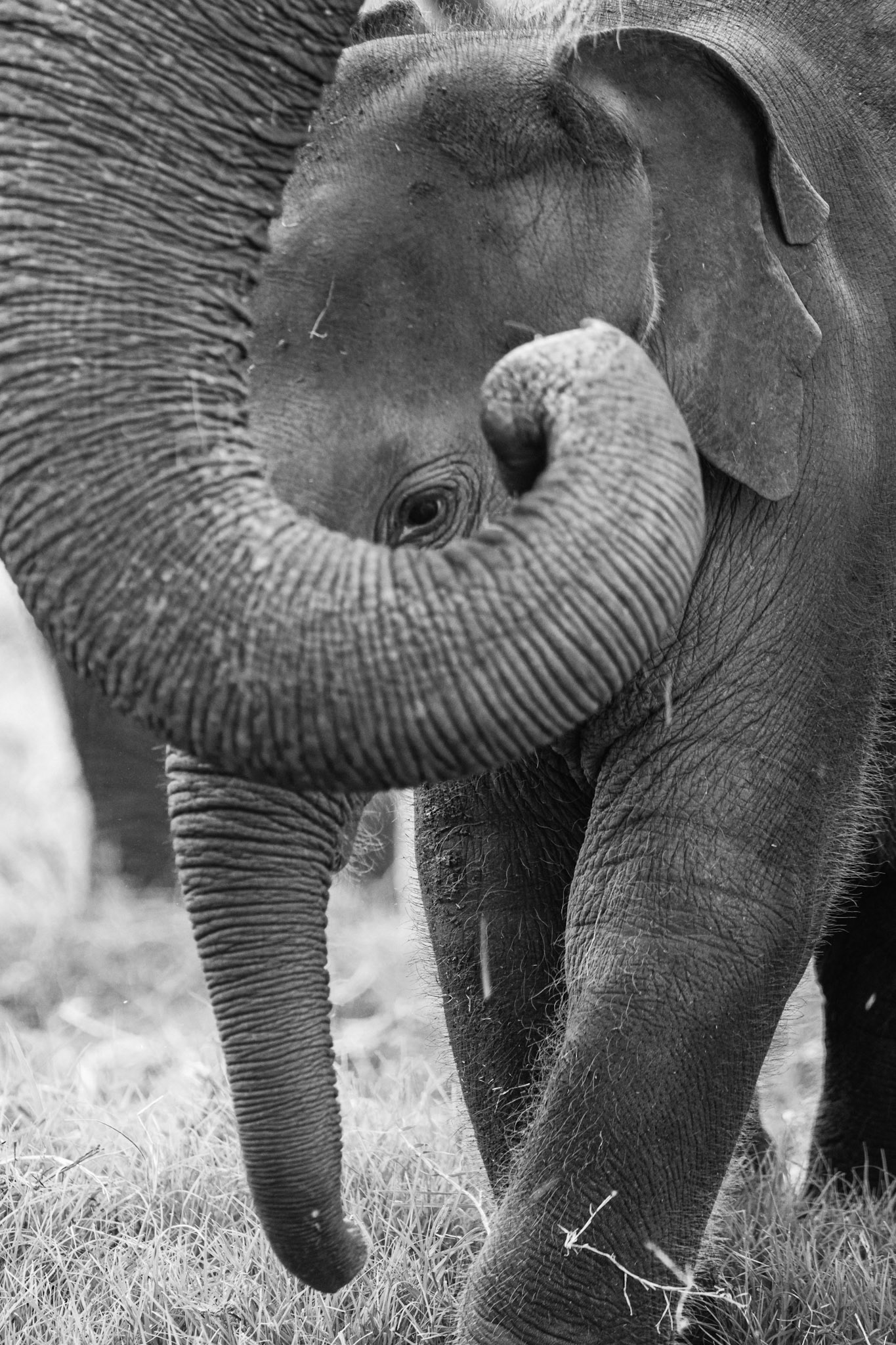
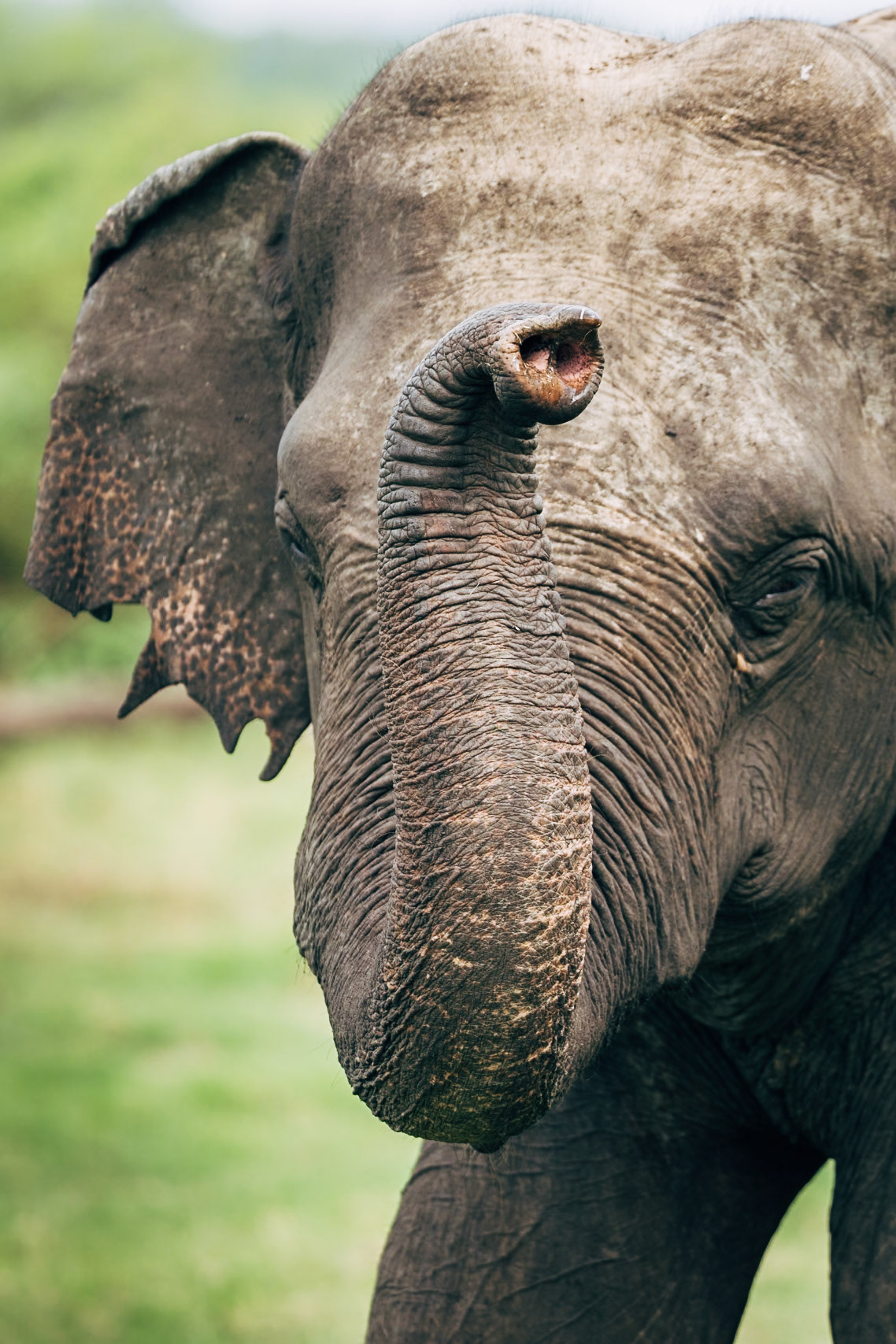
Among the fronds of Sinharaja
Heading south, the landscape changes — and so do its inhabitants.
The Sinharaja Rainforest is a world of its own: a weave of light and humidity where every sound seems to come from a different direction.
Amid the dense canopy, even the slightest movement reveals a presence — gleaming eyes, a flicker, a tail disappearing into the leaves.
In the distance, the purple-faced langurs, endemic to Sri Lanka, appear with their grey-brown coats and almost human expressions, alert to every sound.
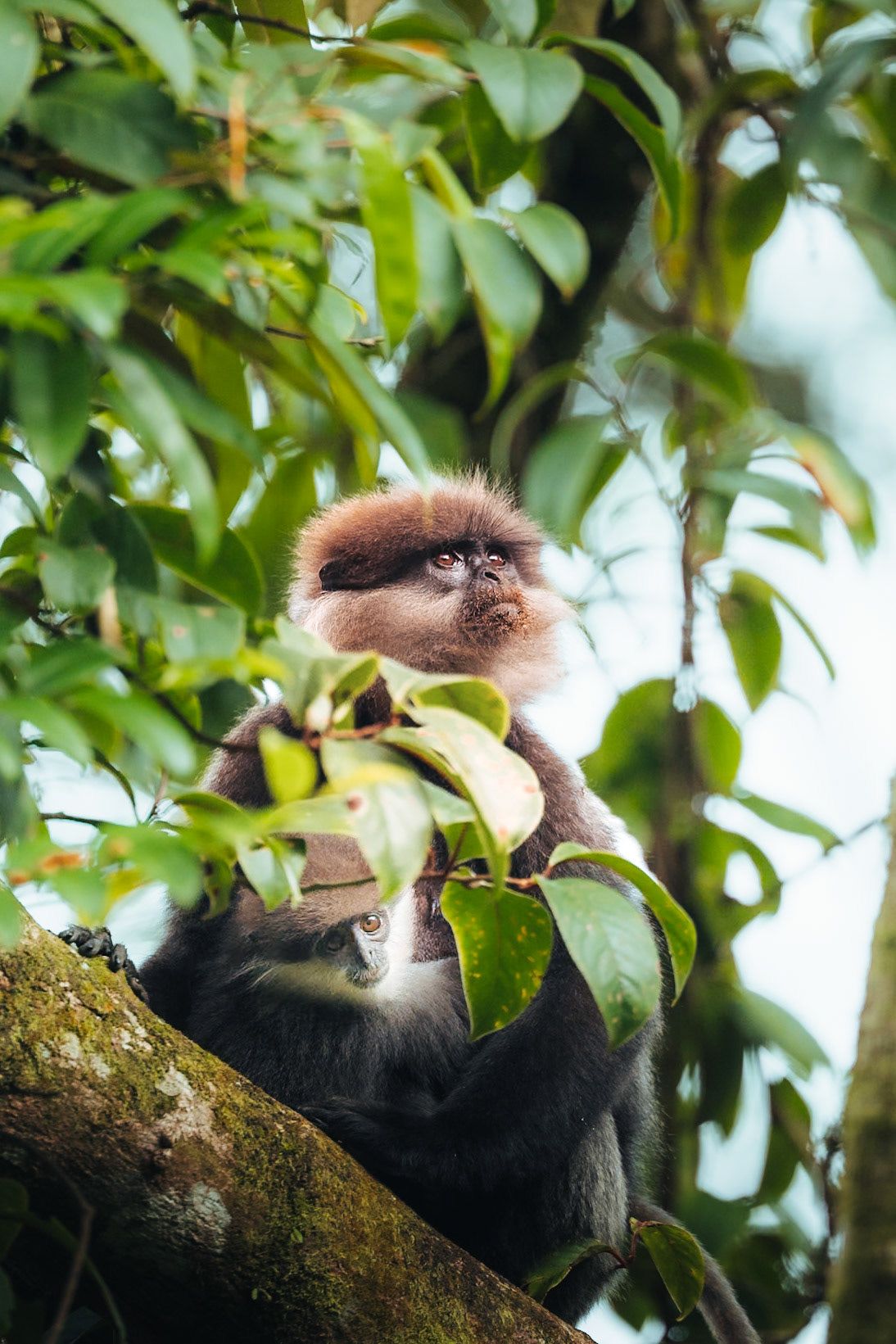
Photographing them is a challenge.
The light shifts by the minute, and the vegetation is so dense it leaves only narrow openings.
In these conditions, the SIGMA 300-600mm F4 DG OS | Sports reveals its full precision: autofocus is fast and flawless, locking onto subjects even when partially hidden, while the constant F4 aperture allows for quick shutter speeds without sacrificing quality or pushing the ISO too far.
The level of detail is extraordinary — every nuance of fur, every amber reflection in the eyes, every beam of light filtering through the leaves to sculpt their forms.
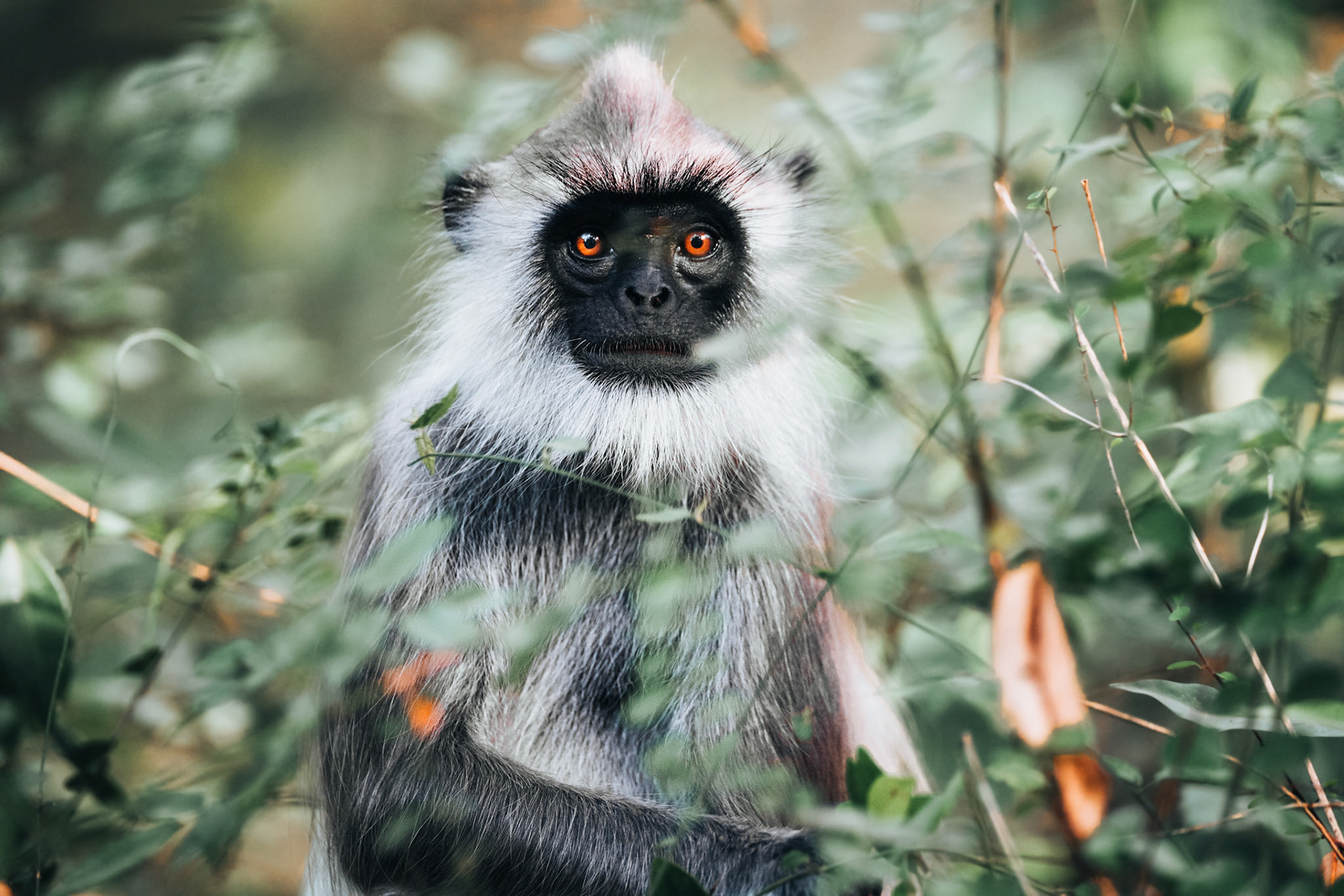
Langur Grigio
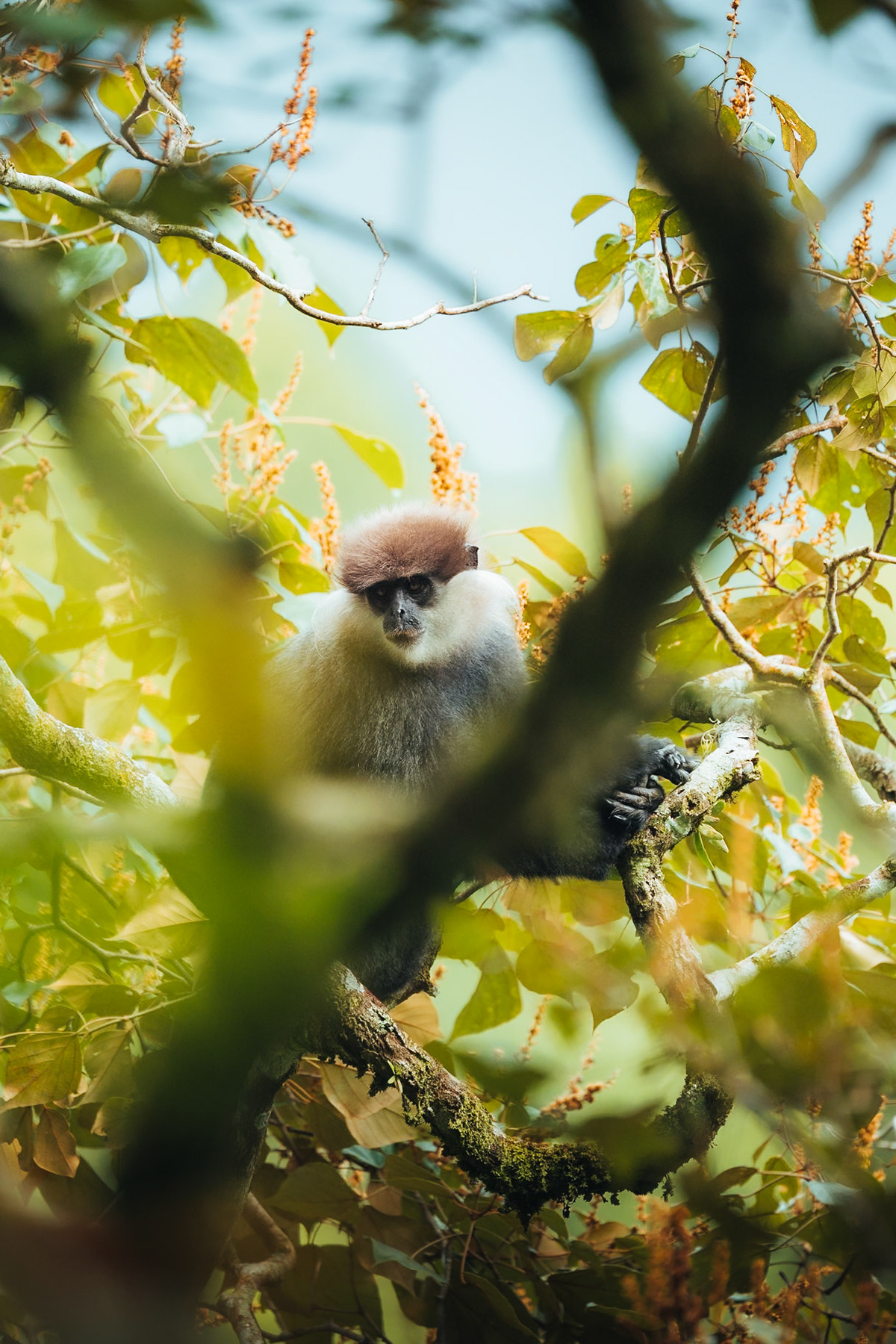
At a safe distance
Among the leaves, almost invisible, a green vine snake (Ahaetulla nasuta) moves slowly — slender, graceful, perfectly camouflaged.
Harmless, yet elegant enough to command a certain respect — or, in my case, a touch of apprehension.
The SIGMA 300-600mm F4 proves the perfect ally, allowing me to keep my distance while at the same time pulling me straight into the scene.
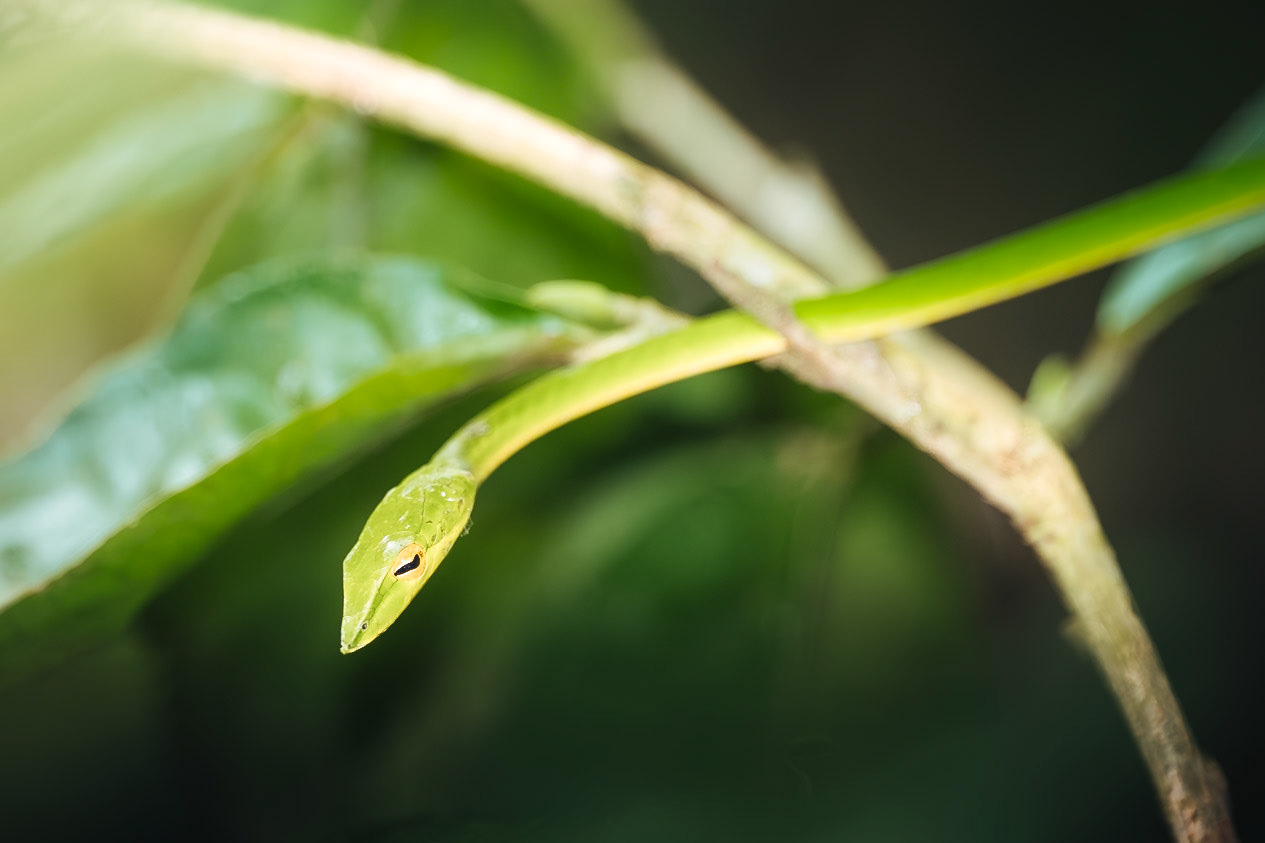
Yala
Yala National Park offers a completely different landscape: red-dirt tracks, open clearings, ponds dotted with water lilies and still herons standing in the shallows.
Every bend brings an encounter — a spotted deer crossing the path, a silent group of langurs at the edge of the forest.
With the SIGMA 300-600mm F4, each scene takes shape from a safe distance, with astonishing clarity even under the harsh tropical sun.
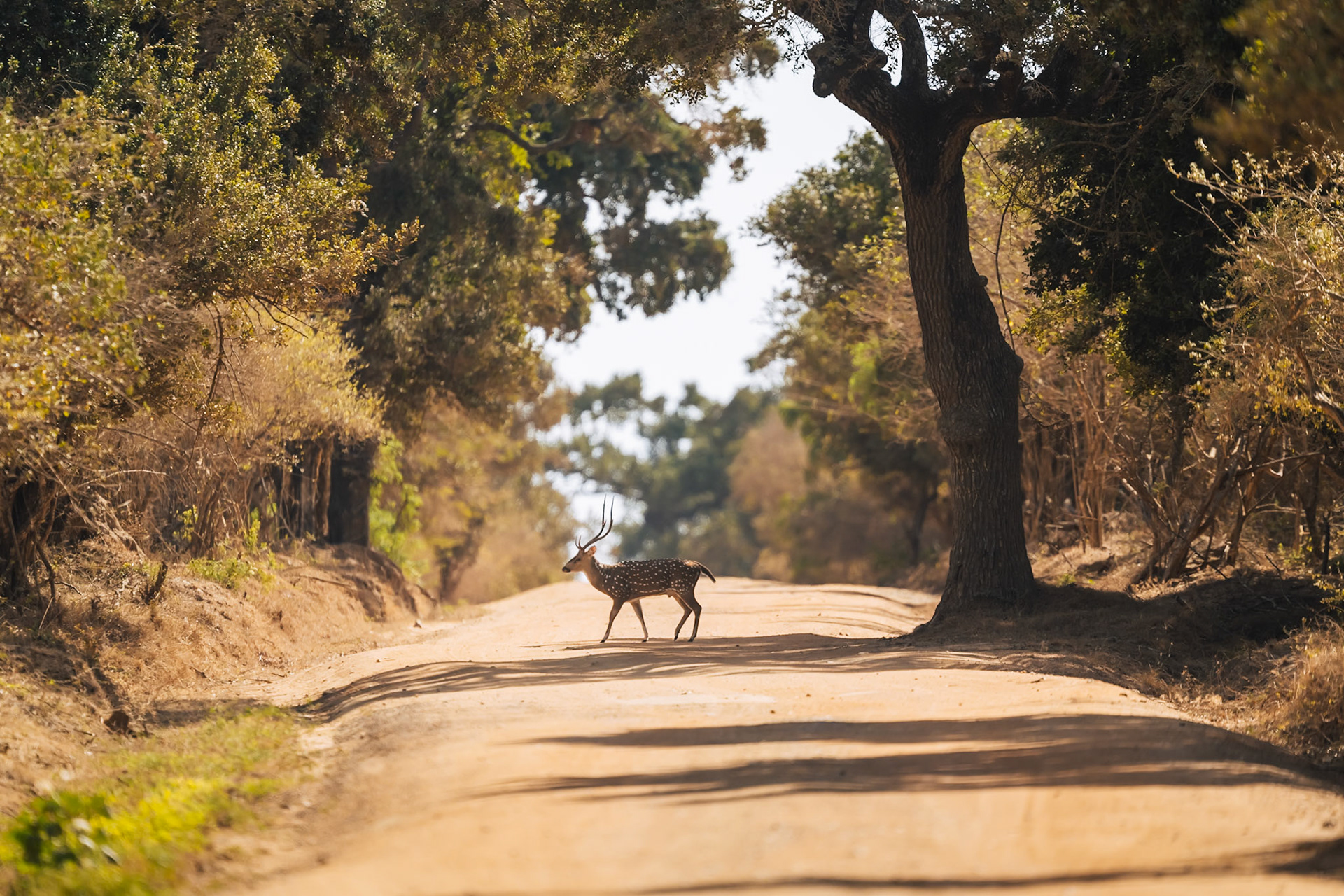
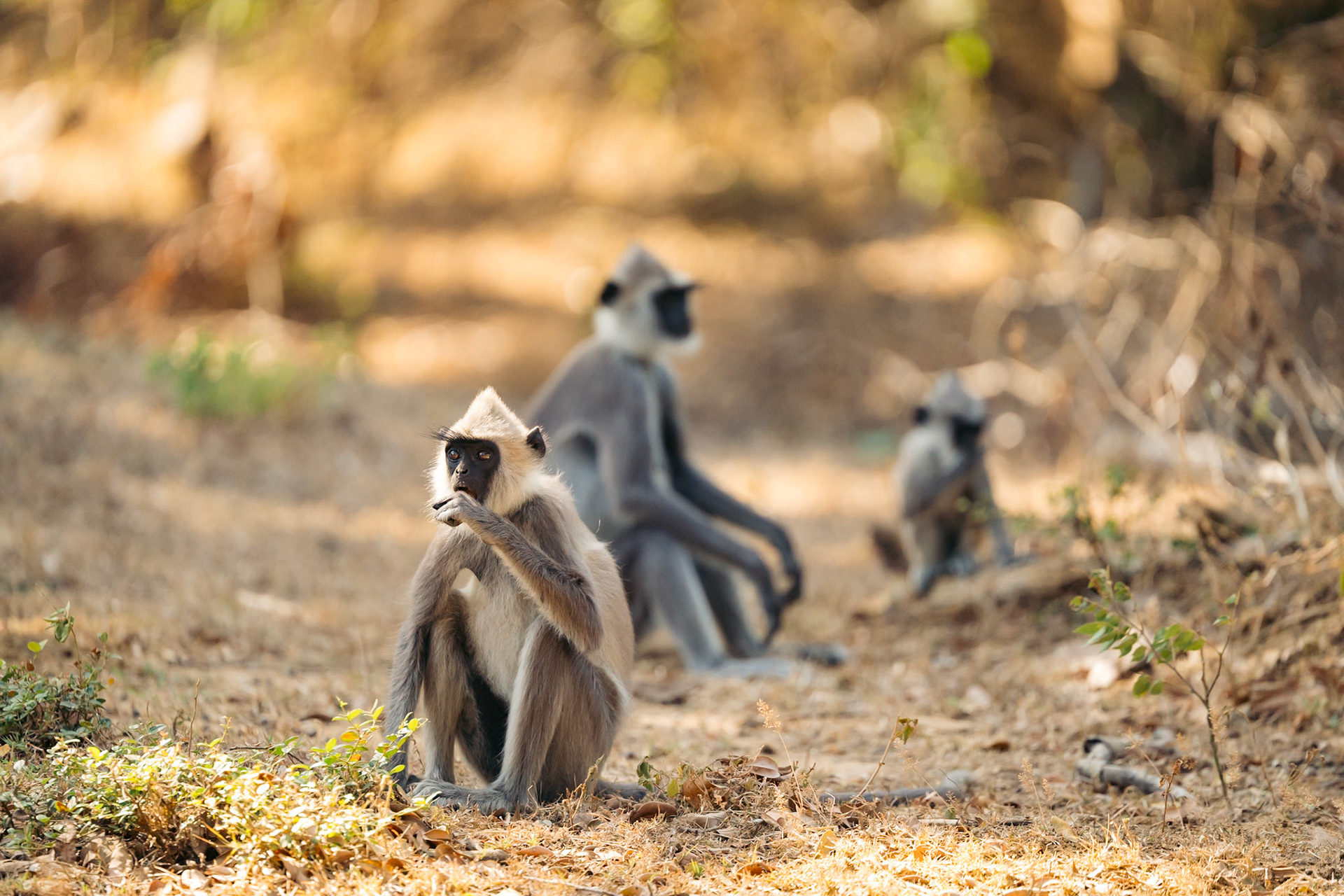
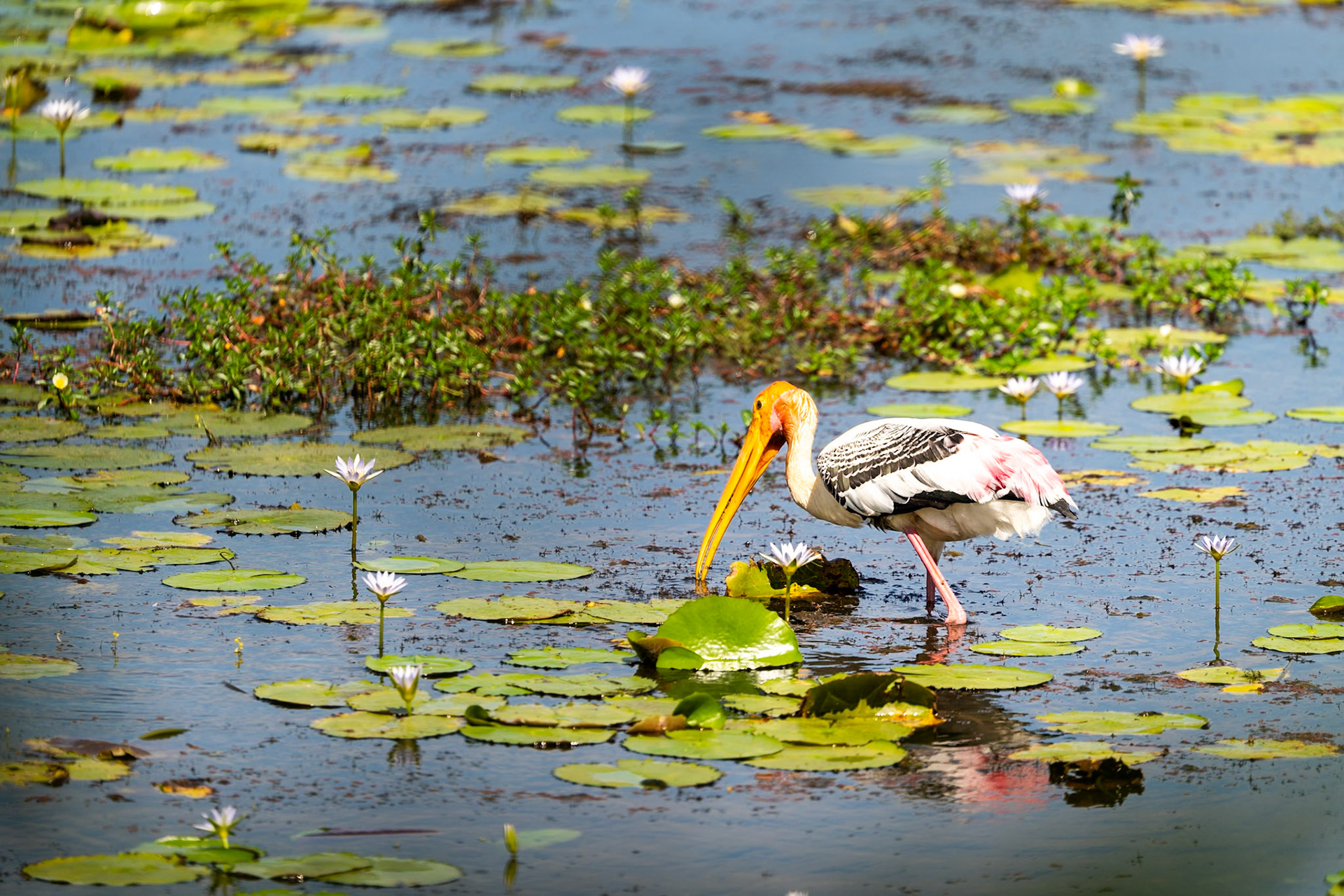
The telephoto lens, with its constant aperture and OS2 stabilization, handles both the jeep’s vibrations and the shimmering heat of the air with ease.
The smooth transition between 300 and 600mm becomes essential on safari: it allows you to reframe without starting the engine and disturbing the animals, capturing both wide scenes and intimate portraits.
Waterbirds such as painted storks and egrets move through reflections and flashes of light; the 300-600 renders perfect detail in their feathers and color, separating the subjects from the background with an almost three-dimensional sharpness.
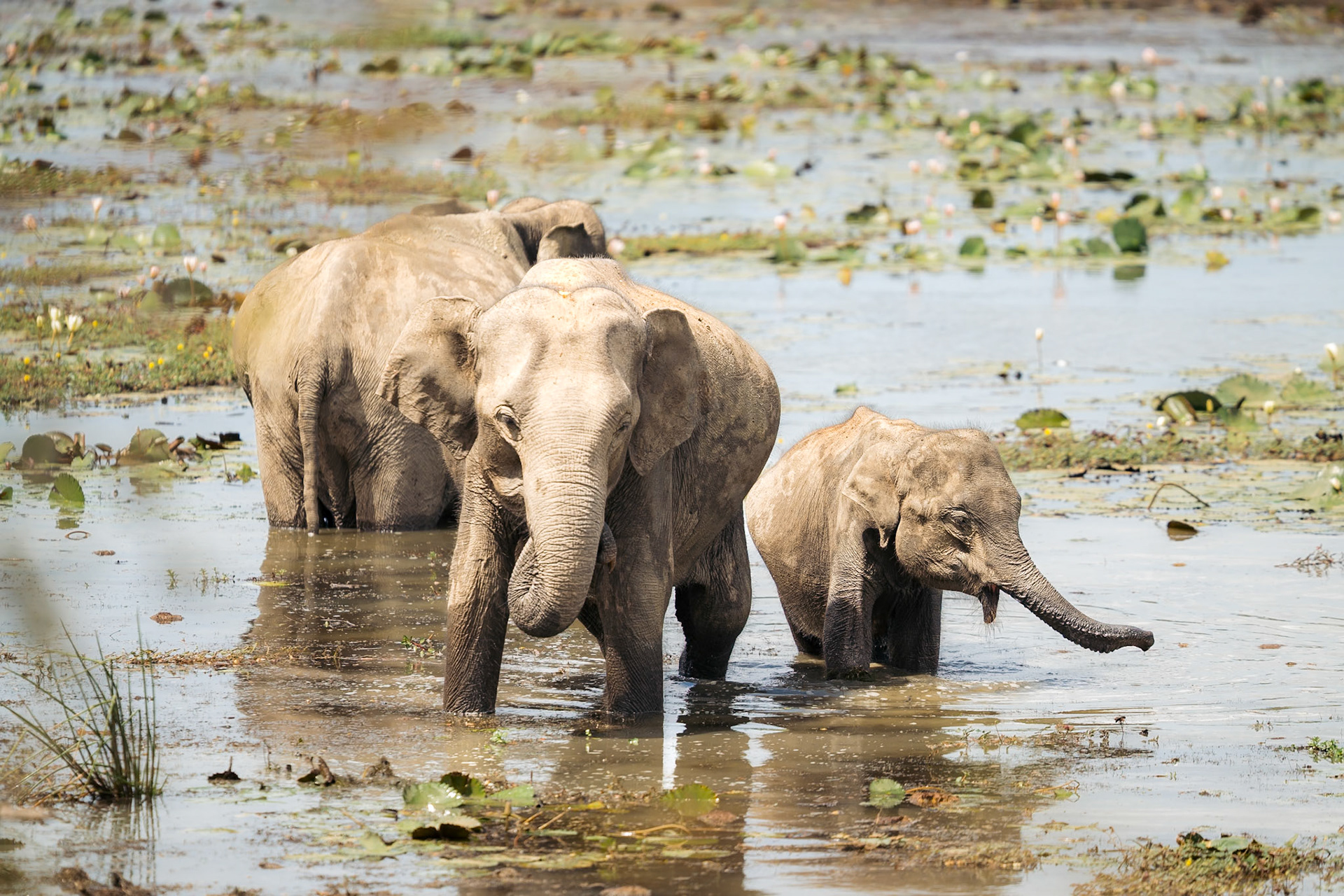
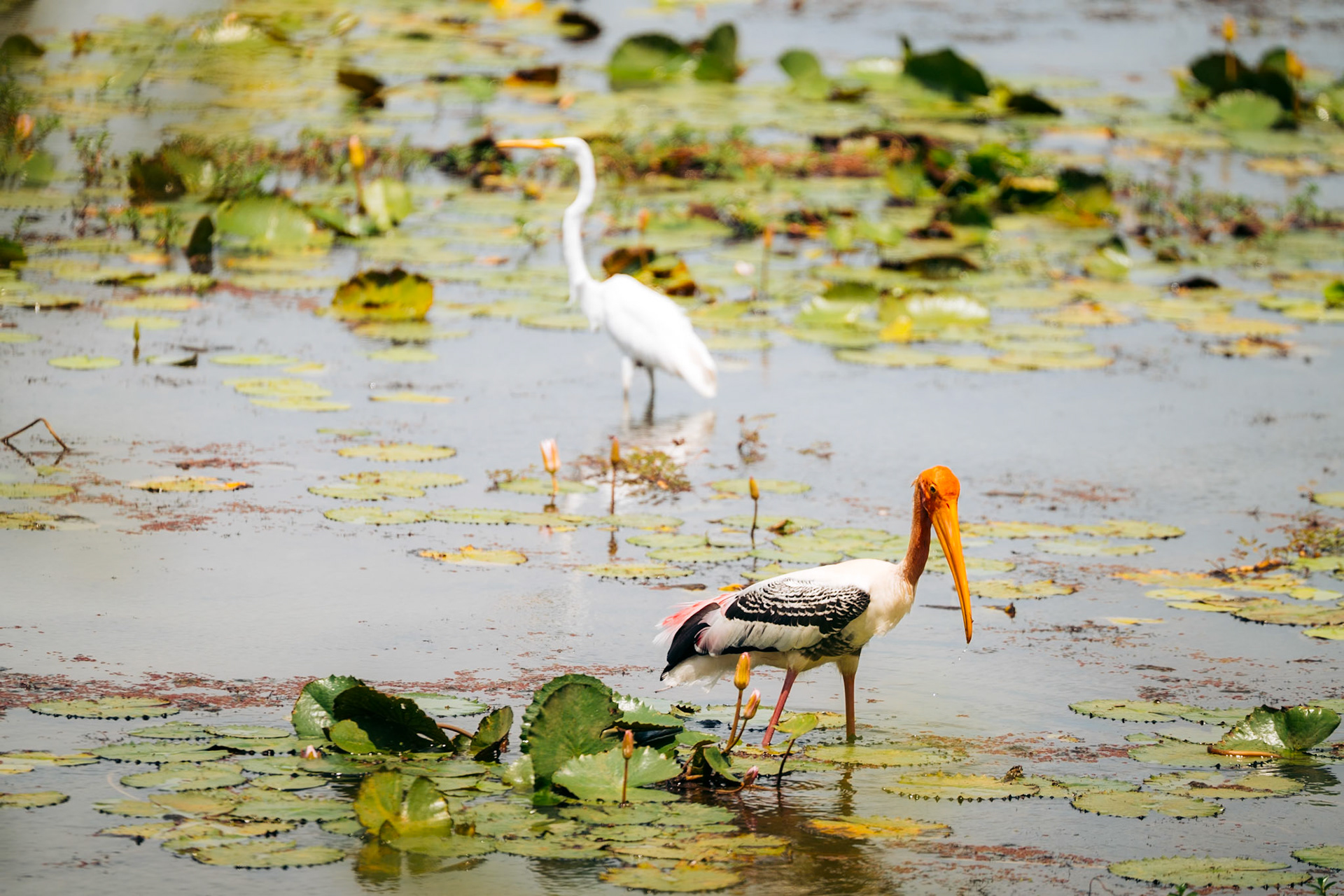
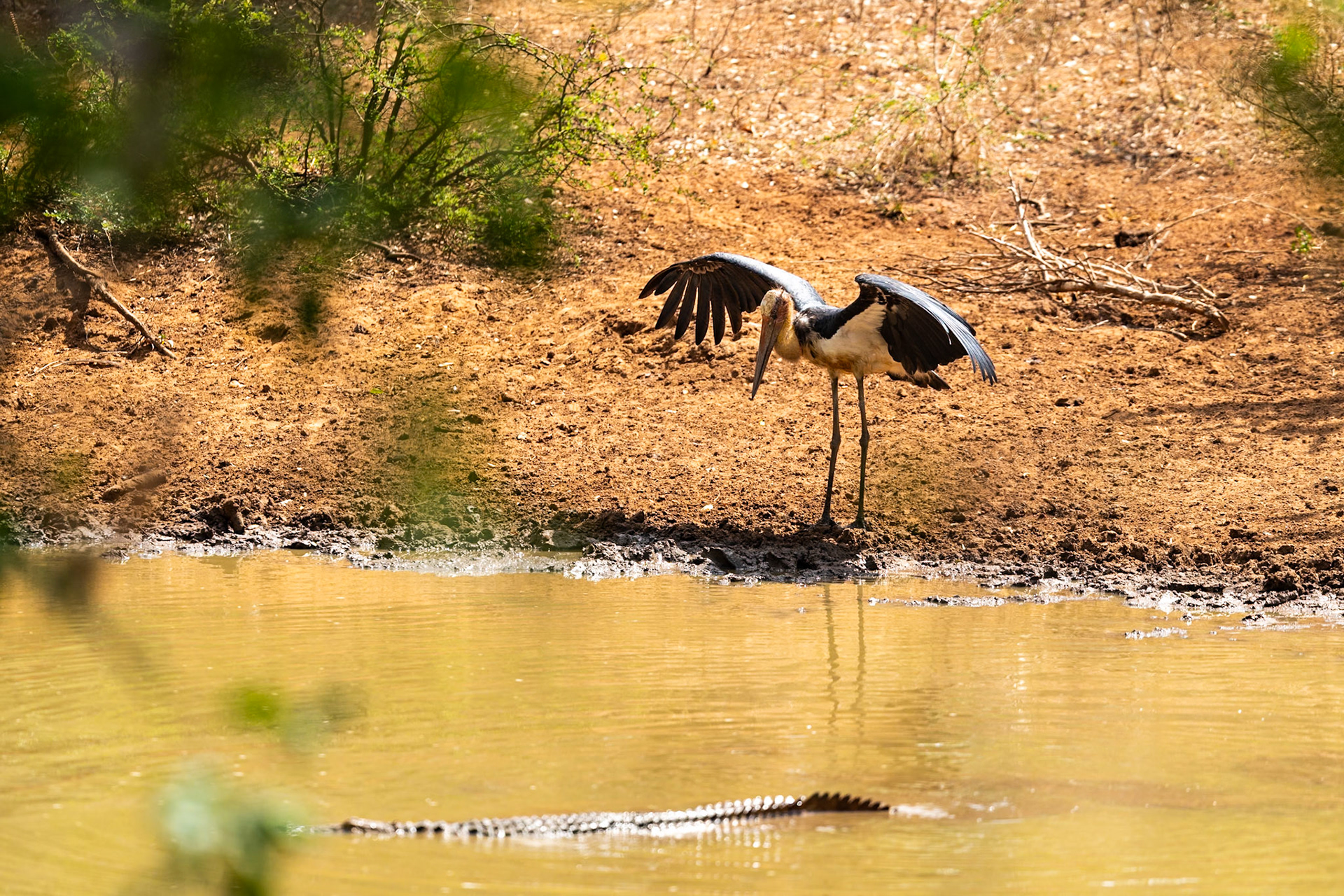
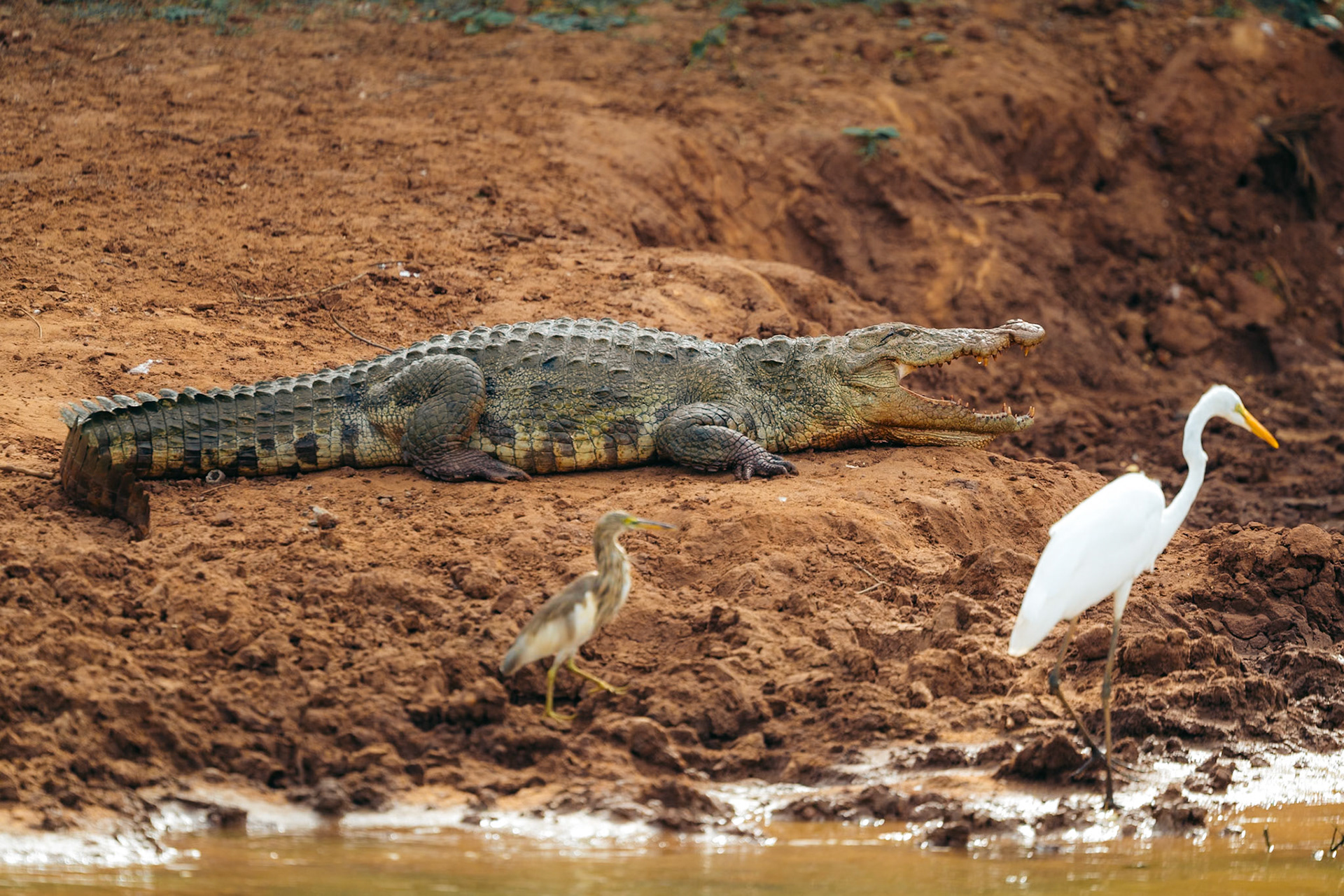
Then came the encounter with a leopard, far away in the dry grass.
Distant and almost perfectly camouflaged, yet at 600mm I was able to observe it and capture a few clean frames.
A brief, discreet encounter, but enough to remind me how much a lens like this can change the outcome in “difficult” situations.
None of the other people in nearby jeeps managed to capture the moment — too far for a “normal” telephoto, too well hidden for a “standard” autofocus system.
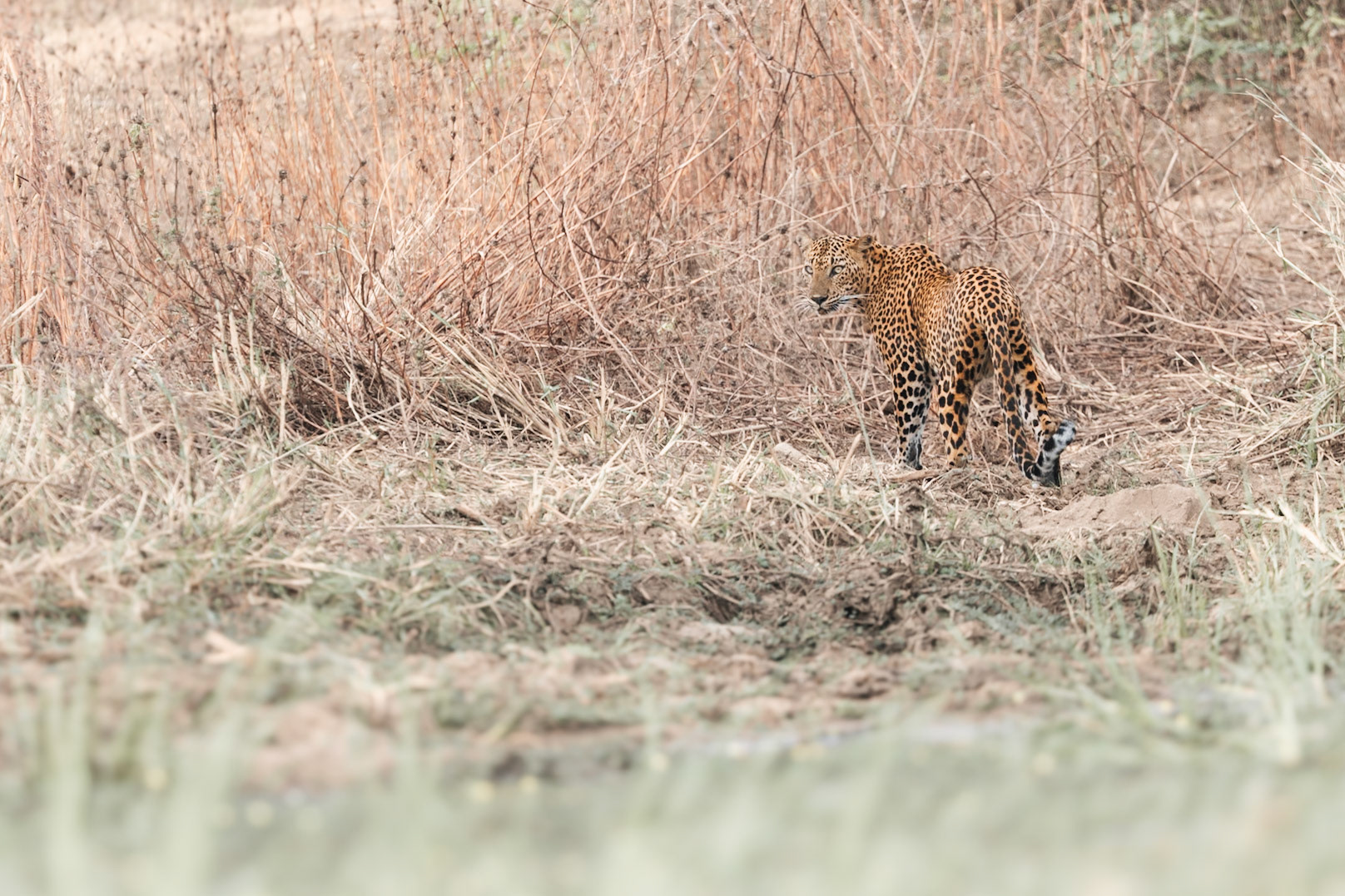
Gal Oya – At water level
The Gal Oya National Park is a remote world of its own, far from the rhythm of road safaris and immersed in a silence of water and light.
It’s the only park in Sri Lanka where safaris take place by boat, gliding across the still waters of Lake Senanayake Samudraya.
At dawn, the silence is broken only by the sound of oars and the distant calls of birds.
In the distance, fishermen raise the sails of their small wooden boats, their faded colors blending with the mist, the reflections, and the golden light of morning.
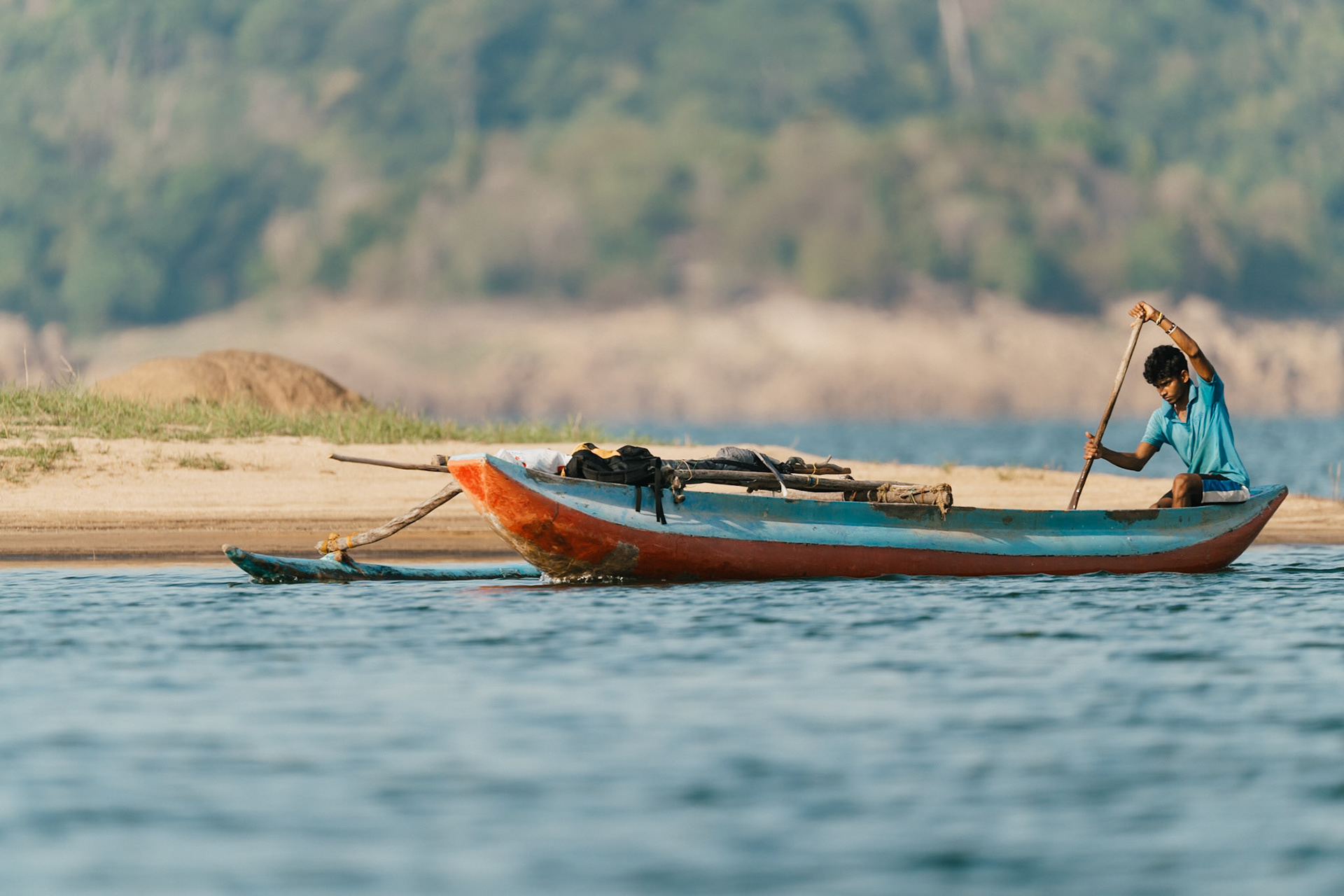
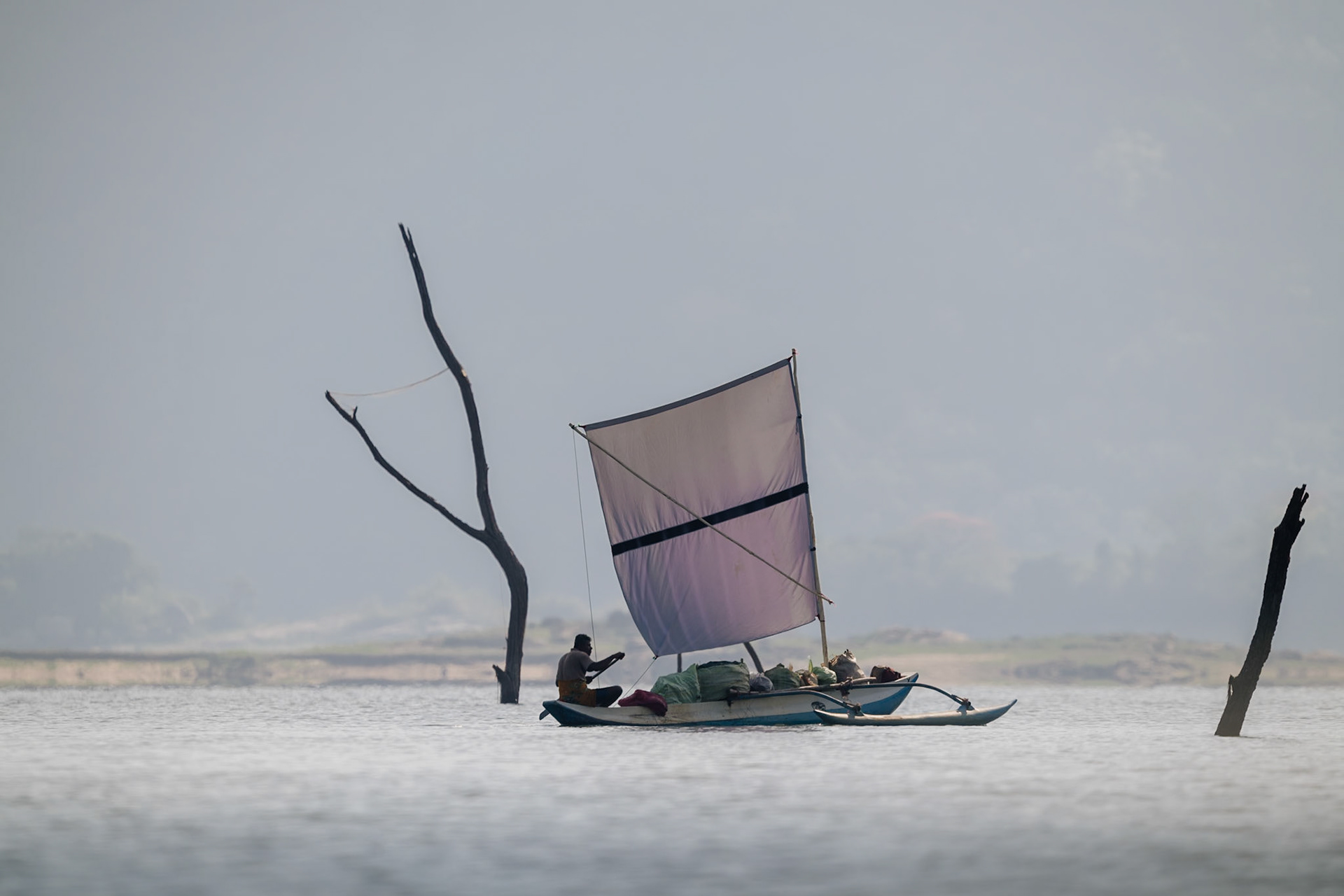
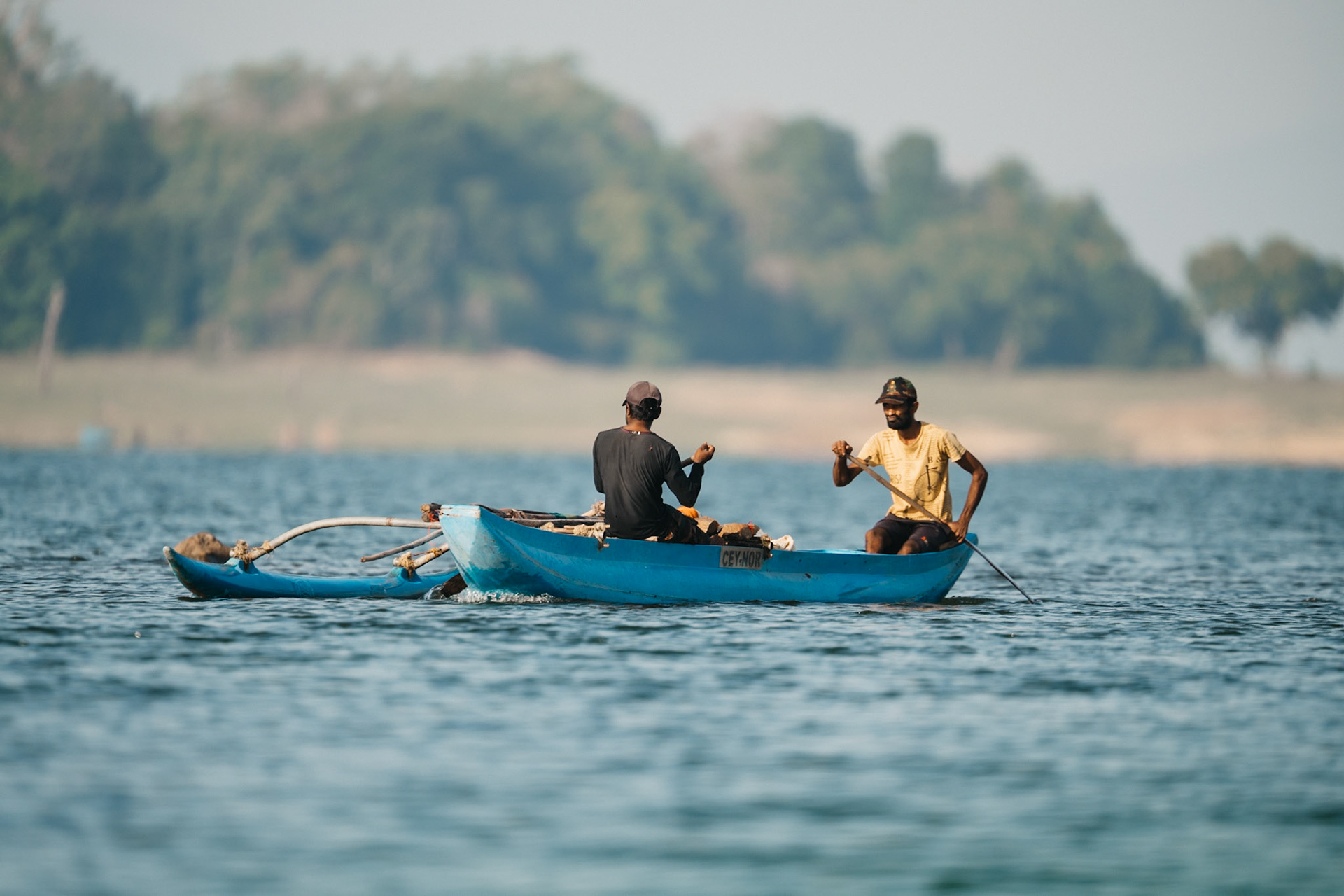
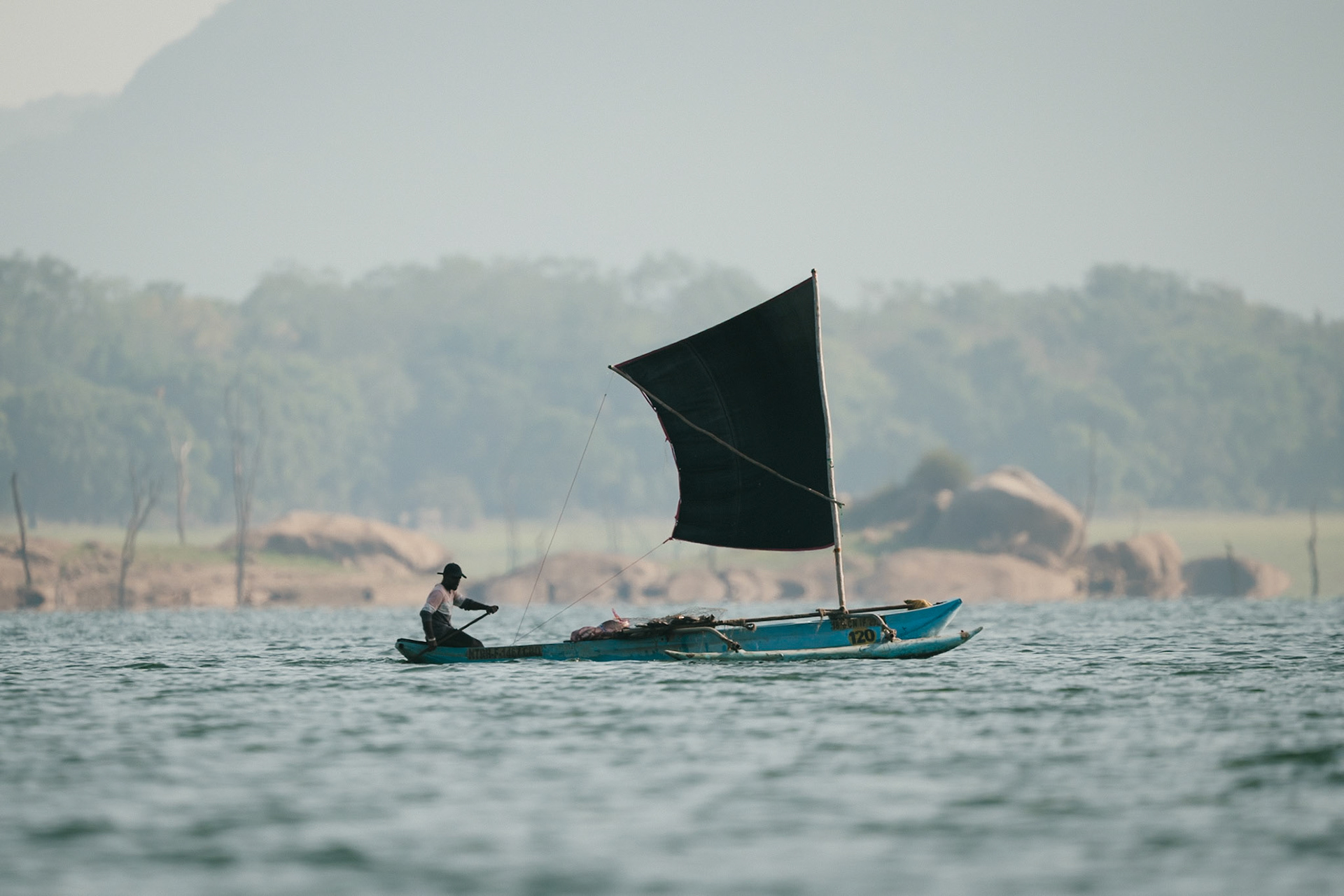
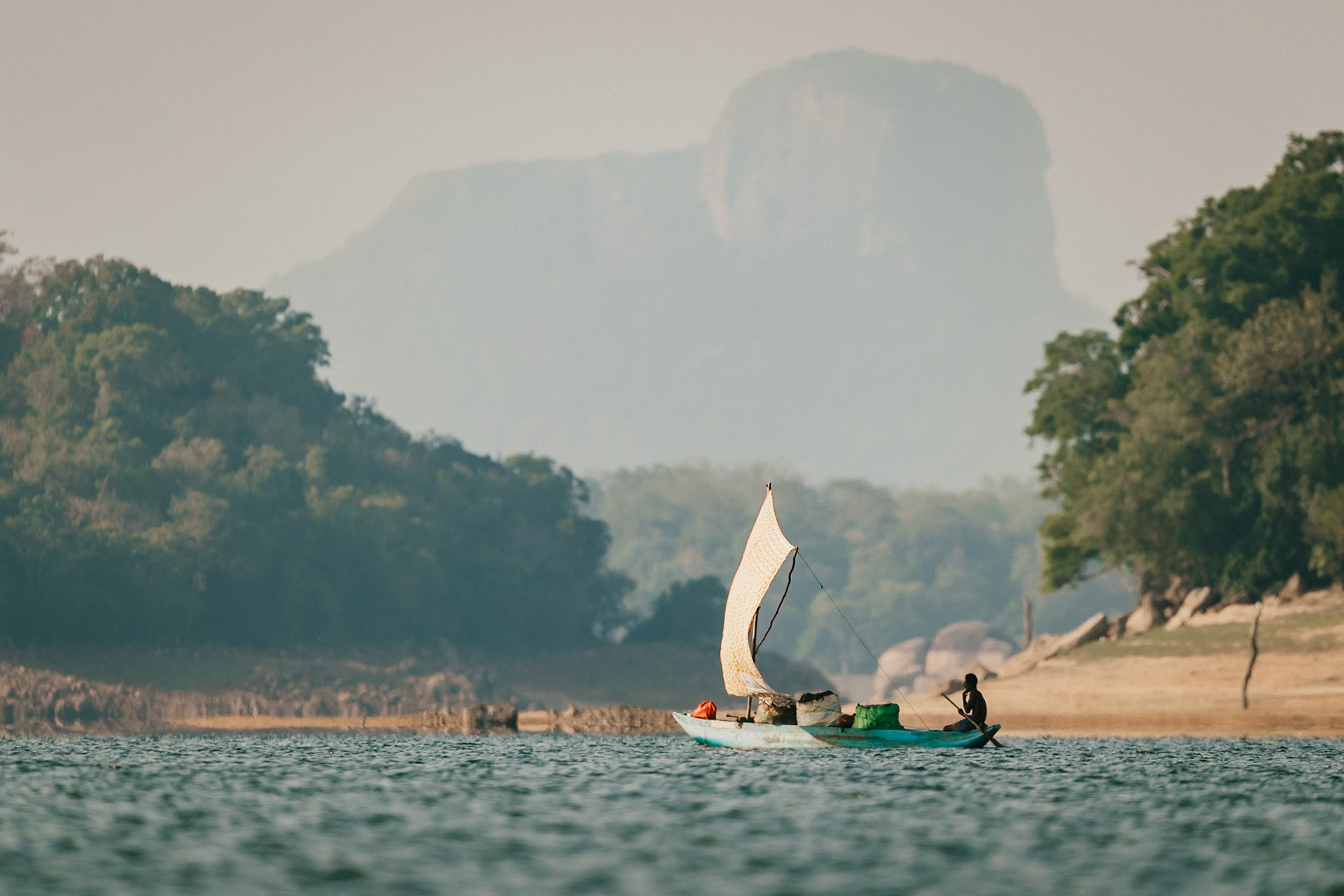
The SIGMA 300-600mm F4 DG OS | Sports performs with remarkable balance even from a boat.
Despite its size, the weight is never an issue: the lens remains well-balanced and stable, while the OS2 stabilizationcompensates effortlessly for the boat’s subtle movements on the lake.
At these distances, every detail stands out in perfect clarity — droplets sliding from the oars, the fishermen’s silhouettes against the morning light, the sudden flight of cormorants skimming the water’s surface.
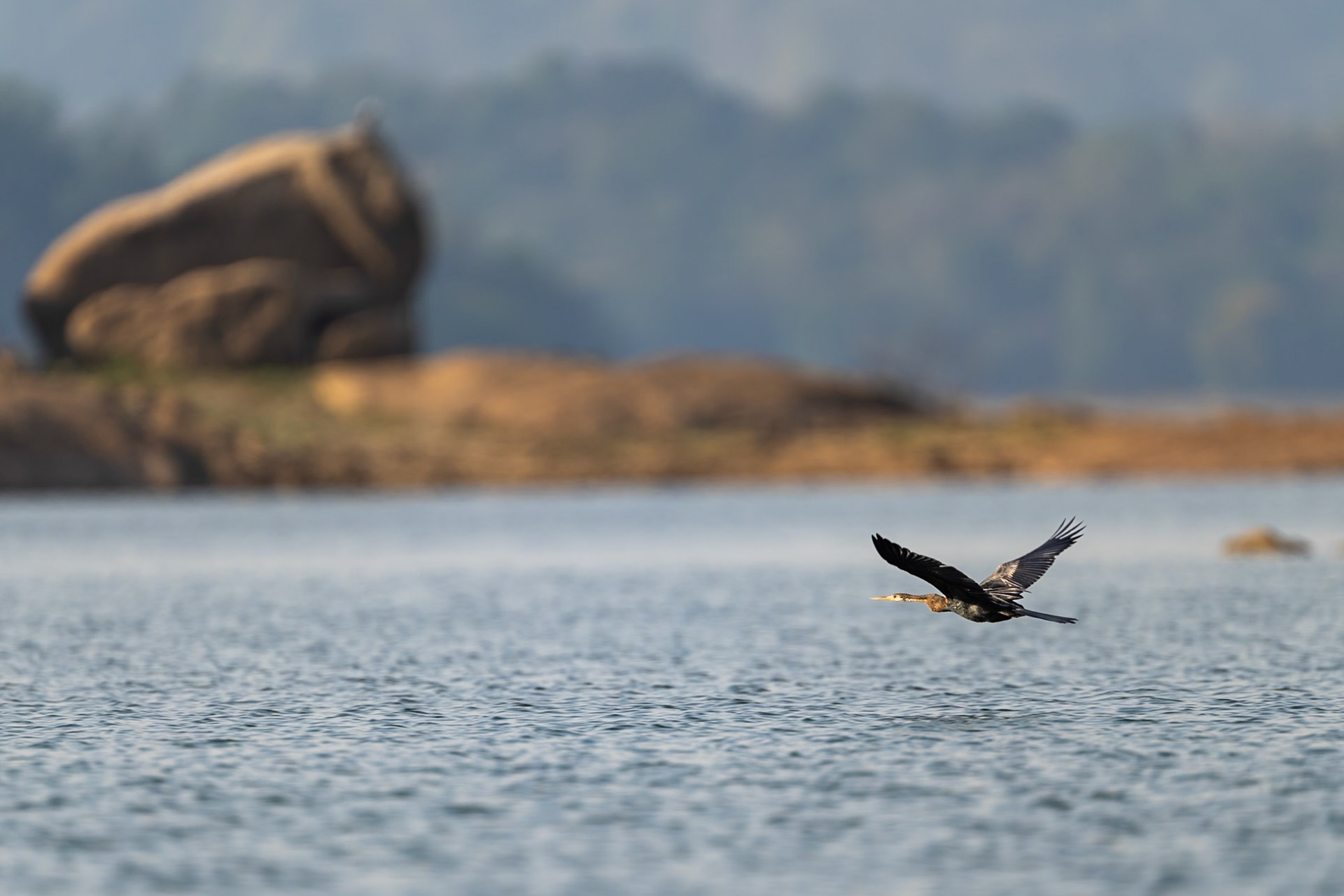
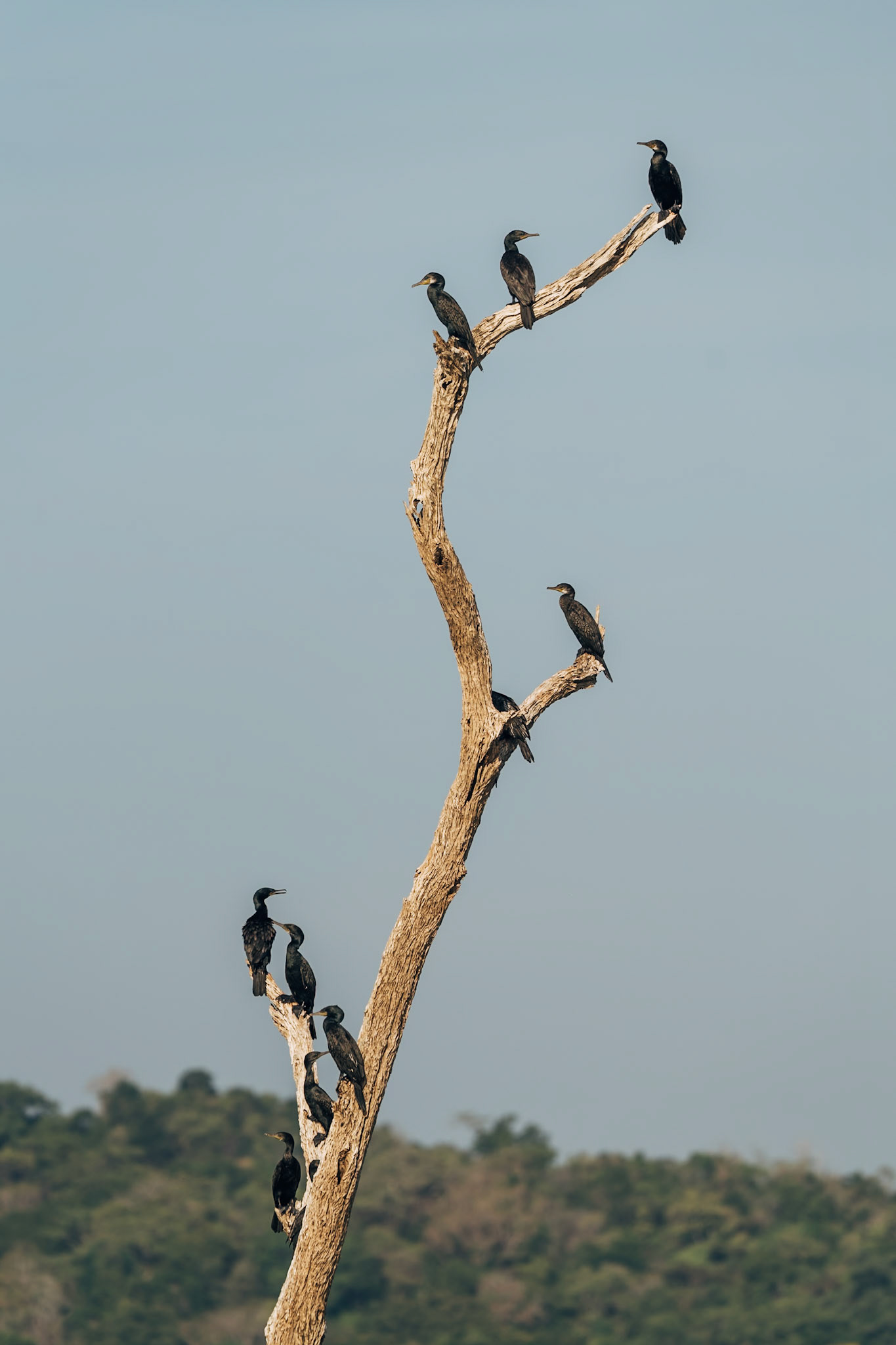
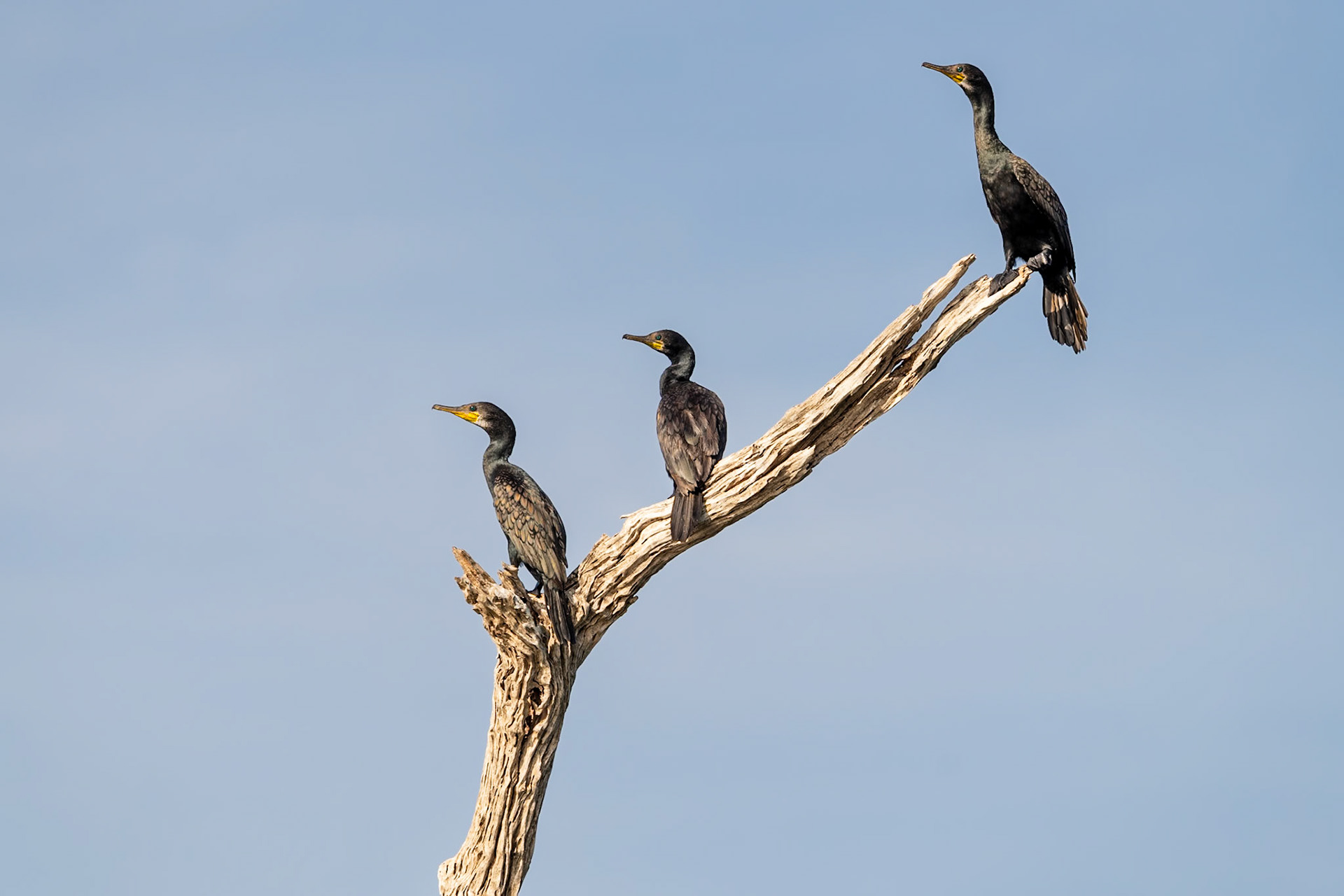
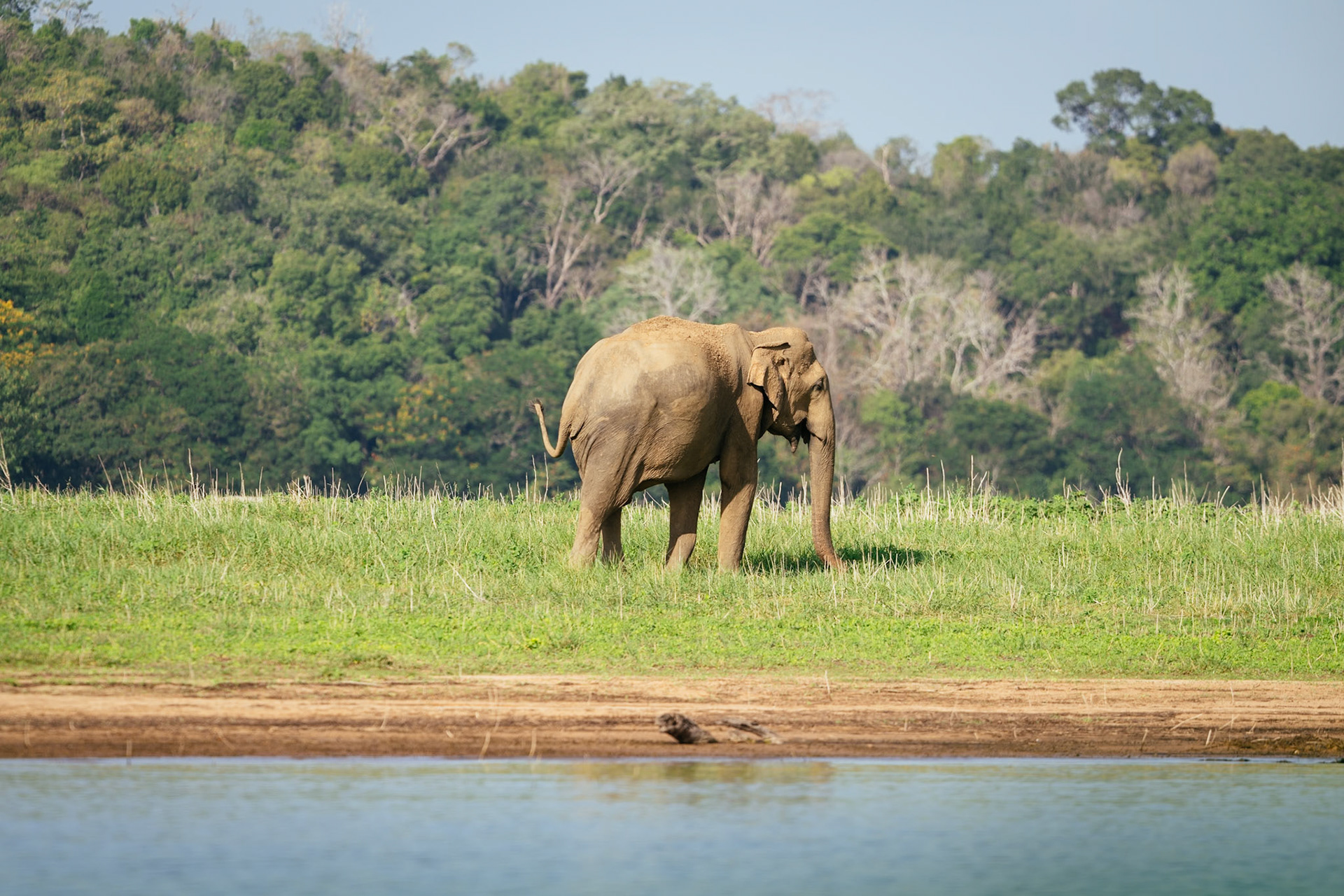
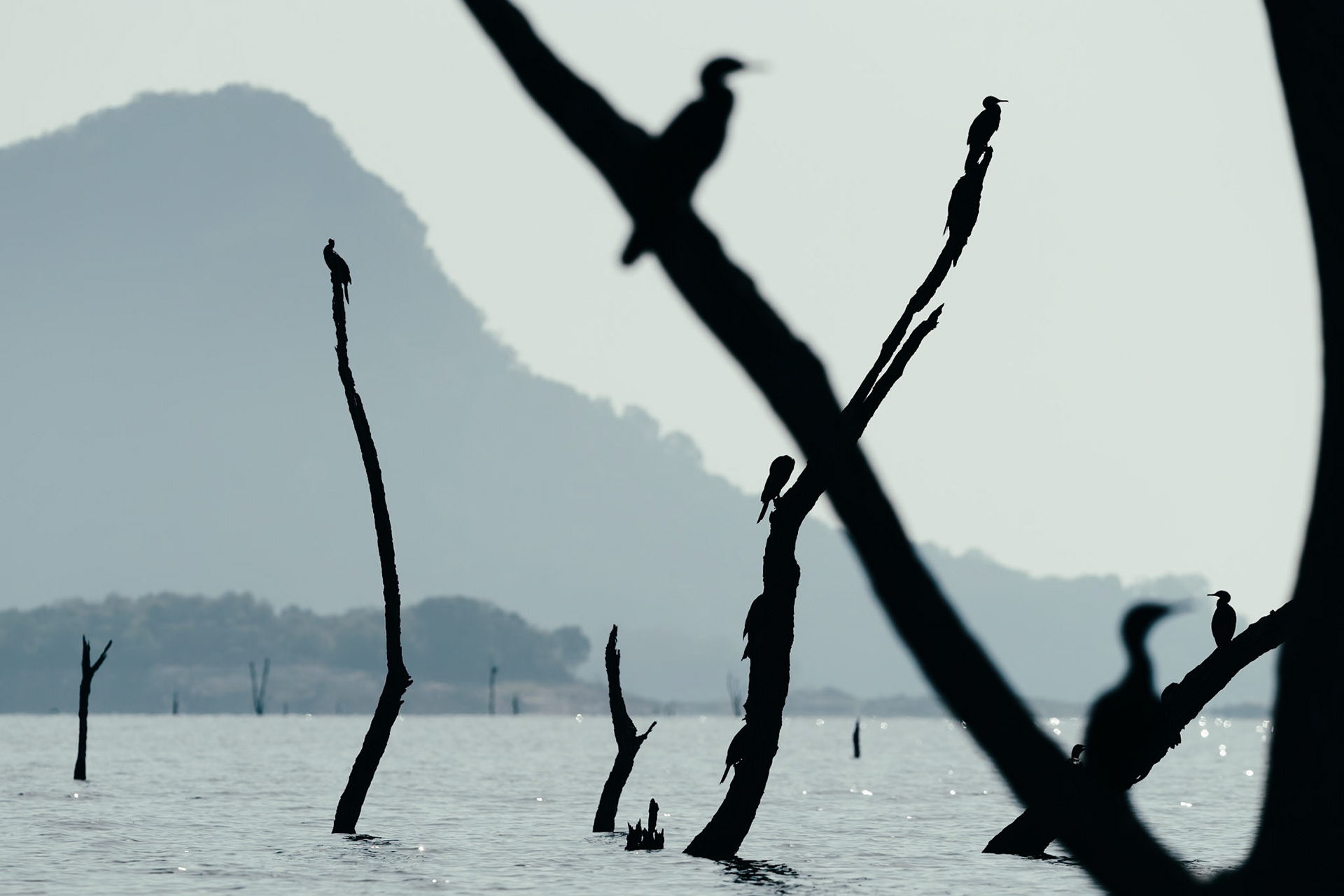
Driving north
Leaving Gal Oya, the road north unfolds slowly — through villages, rice fields, and solitary trees that seem to guard unexpected presences.
A flash of light, a sudden movement: a woodpecker among the branches, then a small bee-eater perched on a strand of barbed wire, like a fragment of sky fallen to earth.
Even outside the parks, the SIGMA 300-600mm F4 keeps surprising me with its versatility.
There’s no need to move closer — just wait, and let the lens do the rest.
Its shallow depth of field isolates the subjects with precision, rendering every detail — feathers, reflections, lines — sharp and harmonious.
A different way of traveling: observing without interfering, letting life flow, and simply capturing its most genuine fragments.
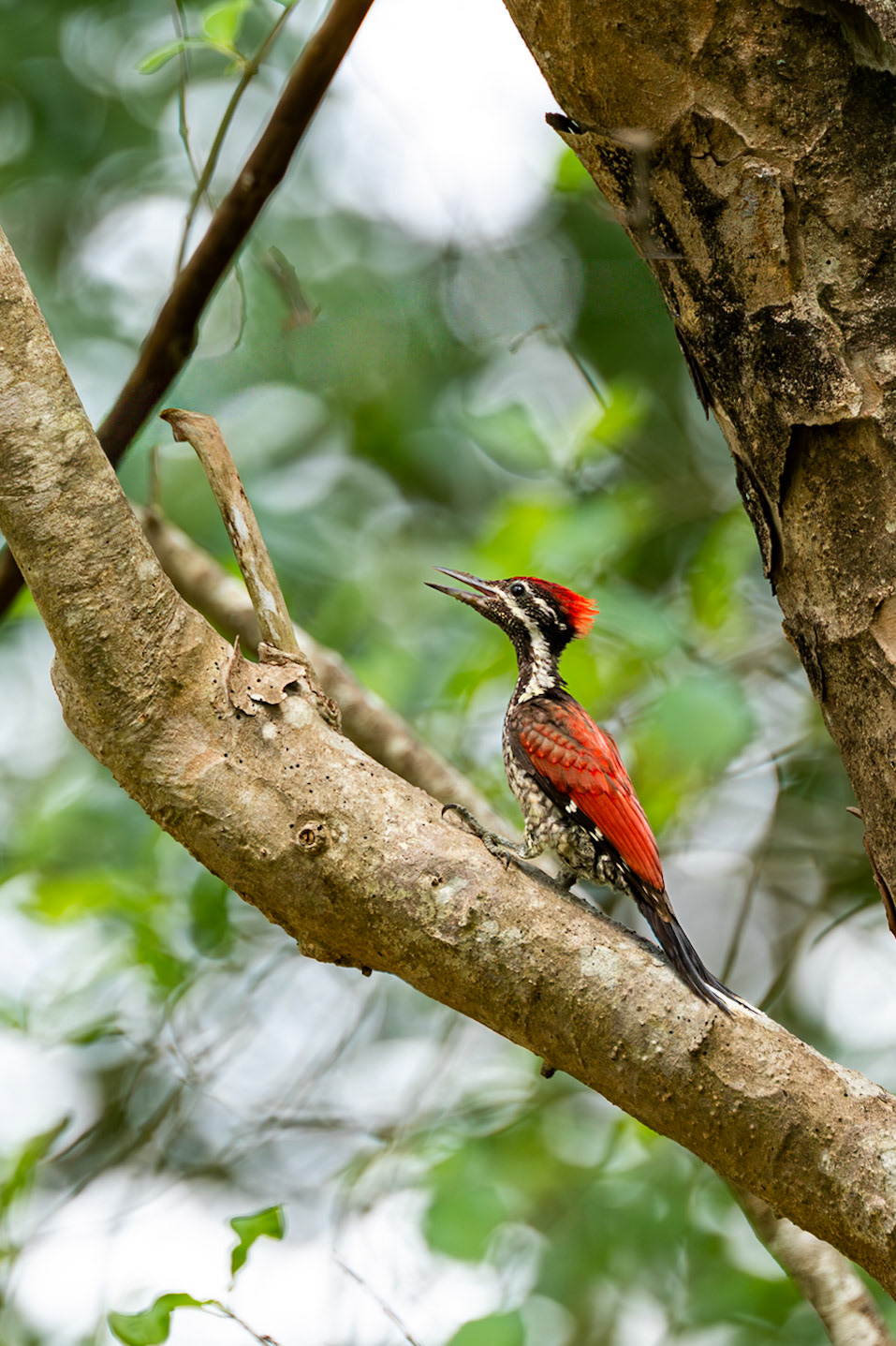
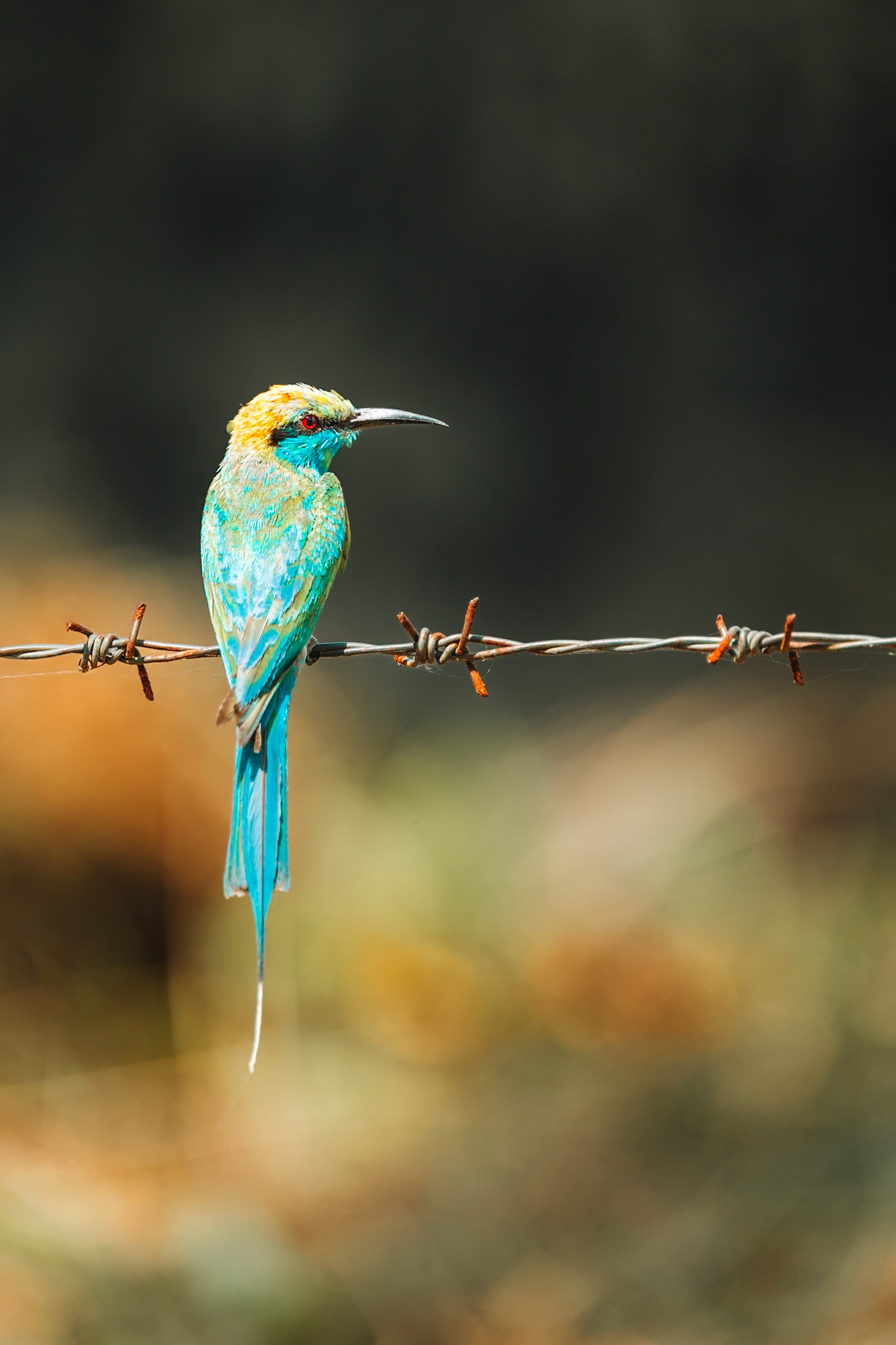
Wilpattu
Wilpattu National Park, the largest in Sri Lanka, unfolds like a mosaic of forests and lagoons.
The name means “land of lakes,” and indeed, water is everywhere — small pools, hidden ponds, mirrors reflecting the sky and the soft afternoon light.
Here, life moves slowly, quietly. No crowds of jeeps, only the stillness of a vast park living in its own wild, ancient rhythm.
High among the branches, painted storks build their nests — tangled twigs, feathers catching the morning light, a constant choreography of wings weaving through the dry branches.
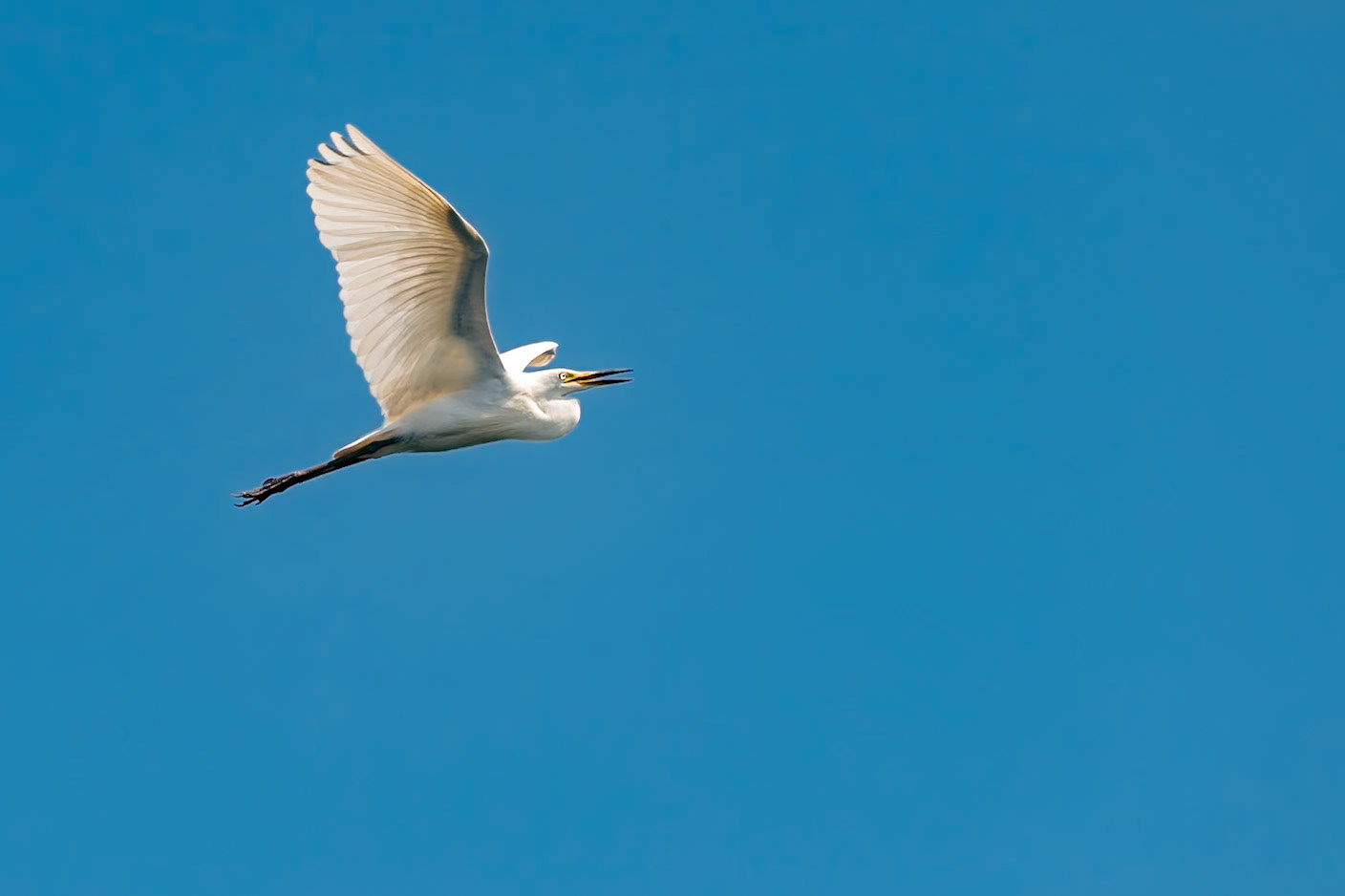
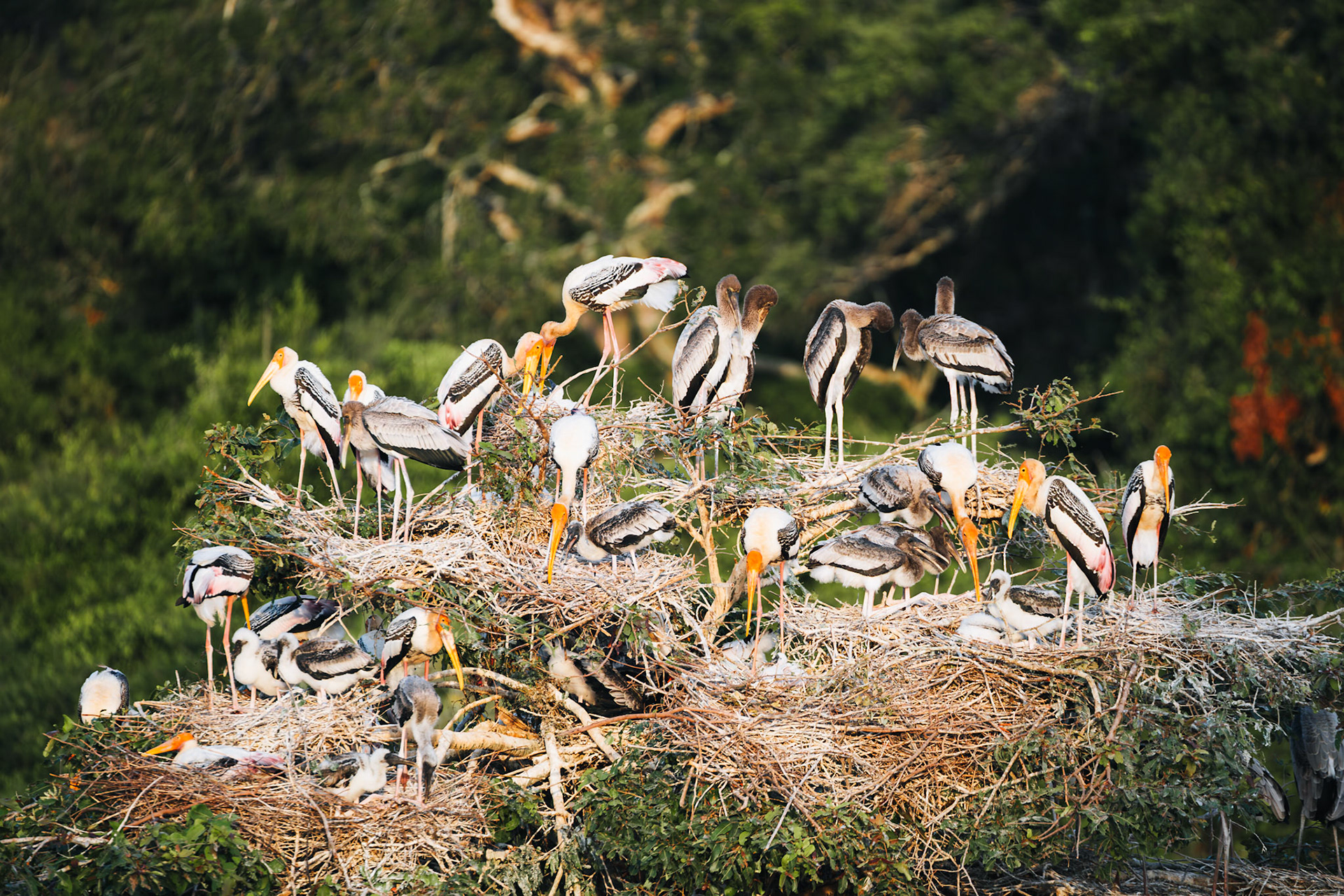
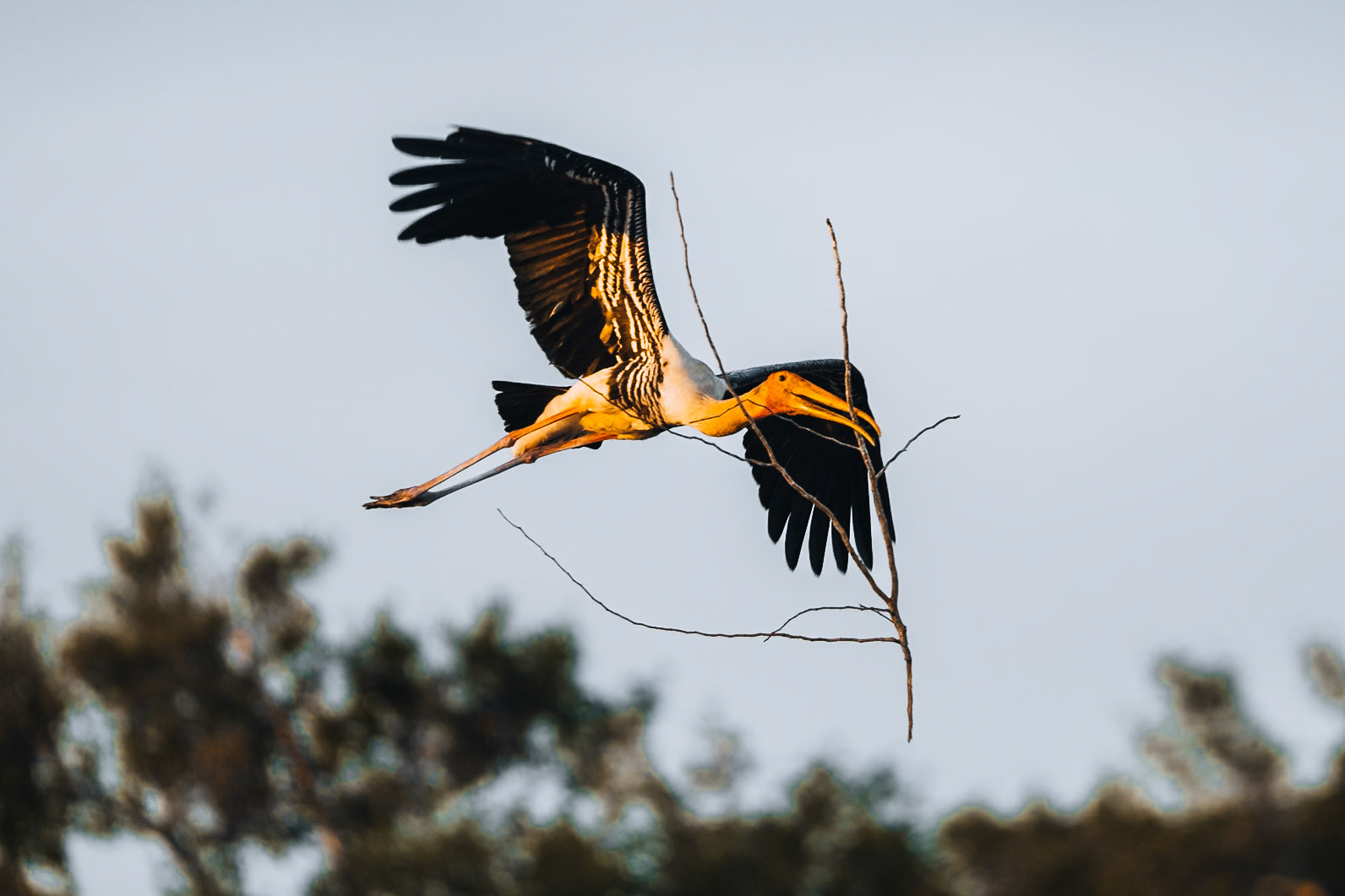
Bare branches, filtered light, a tense silence.
An eagle remains perfectly still, blending into the trunk itself.
A steady gaze, feathers glistening with moisture, breath barely visible.
The SIGMA 300-600mm F4 renders the scene with perfect balance between power and precision.
Every nuance of plumage, every reflection in the eye, every texture of the bark remains faithful and crisp, even at full focal length.
And in the second image — a glance veiled by a thin membrane.
Have you ever seen an eagle’s eyelids? Here they are.
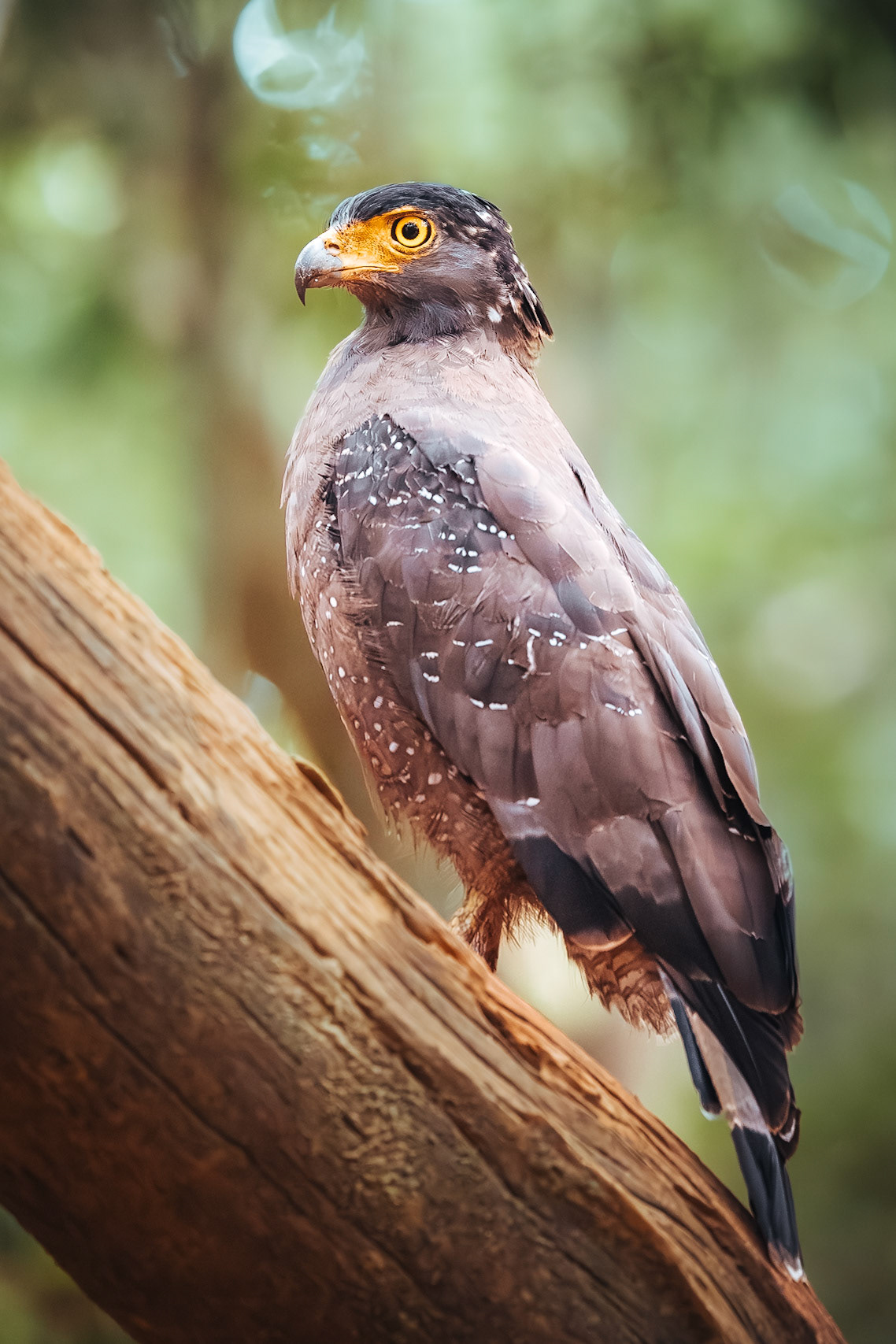
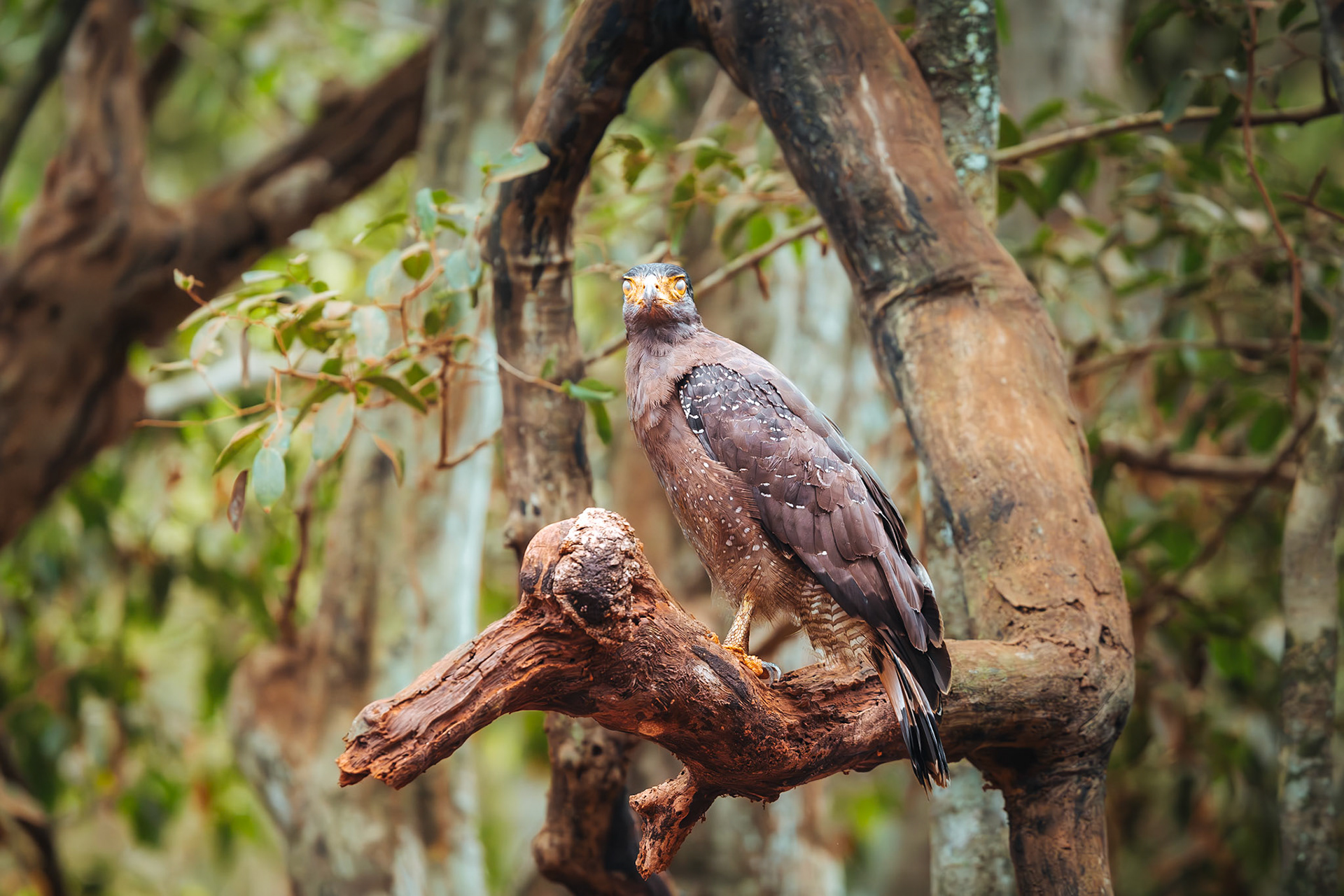
Shadows, light, silence.
A young Sri Lankan leopard on pale sand — alert gaze, movements barely perceptible.
Another one in the distance, resting under the shade of the bushes.
Its coat blends with the ground, each spot a reflection, each breath a pause in the forest.
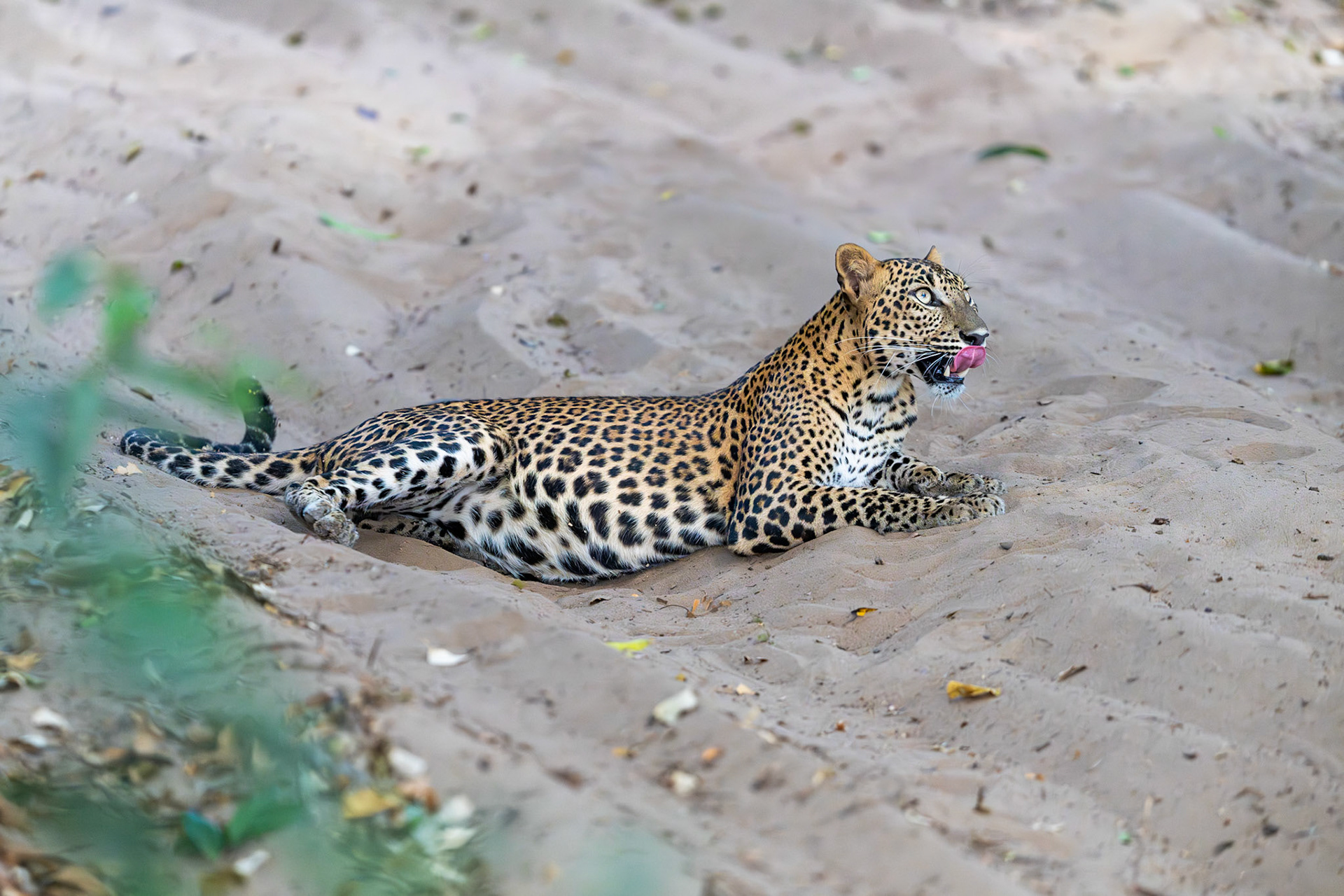
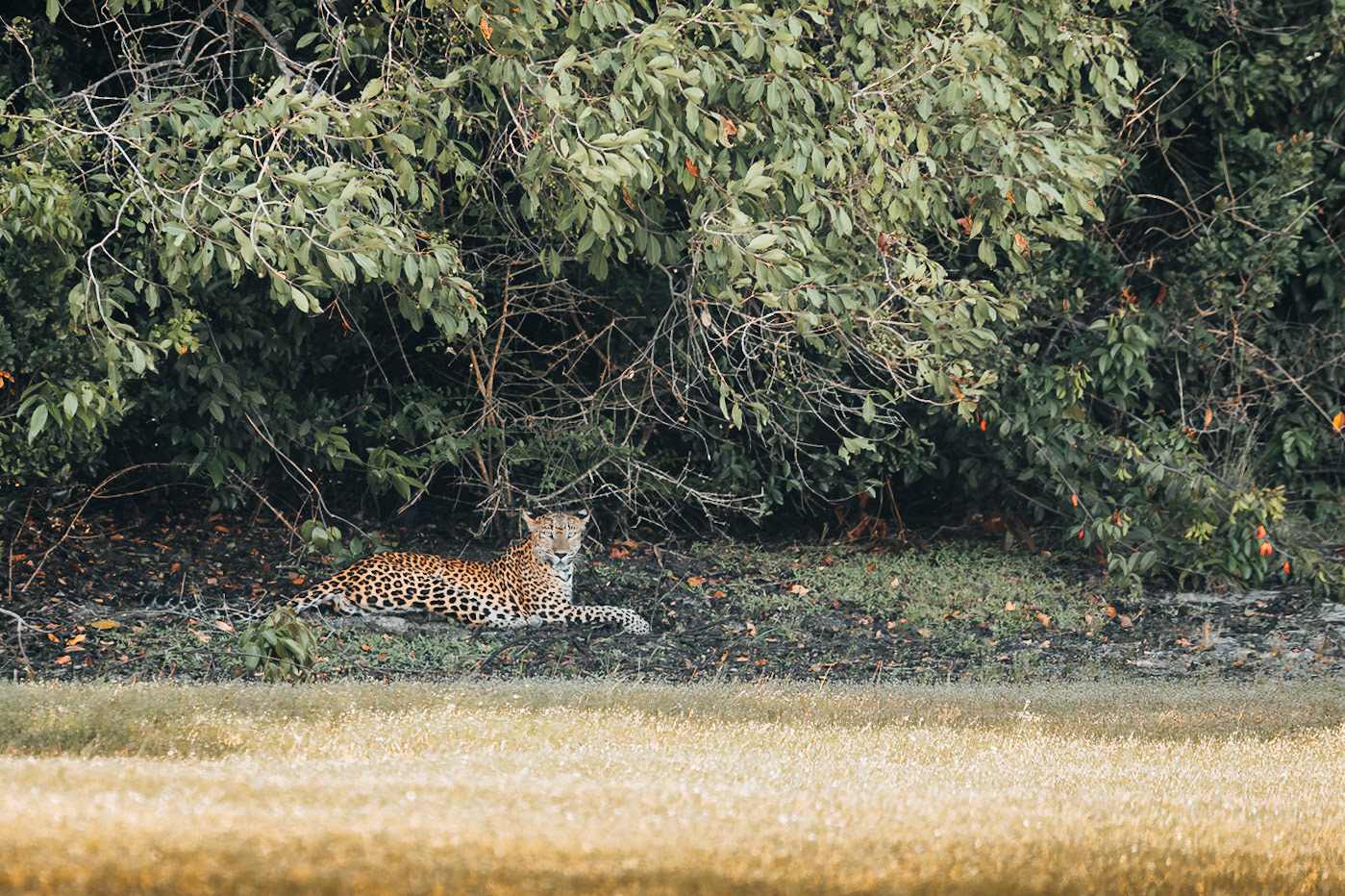
Among the branches, two more — paws hanging from the limbs, eyes half-closed, complete calm.
The SIGMA 300-600mm F4 locks focus with remarkable precision, even through the maze of leaves and branches.
Combined with the Sony A7R V’s subject recognition system, the focus point stays steady and true, even through dense vegetation.
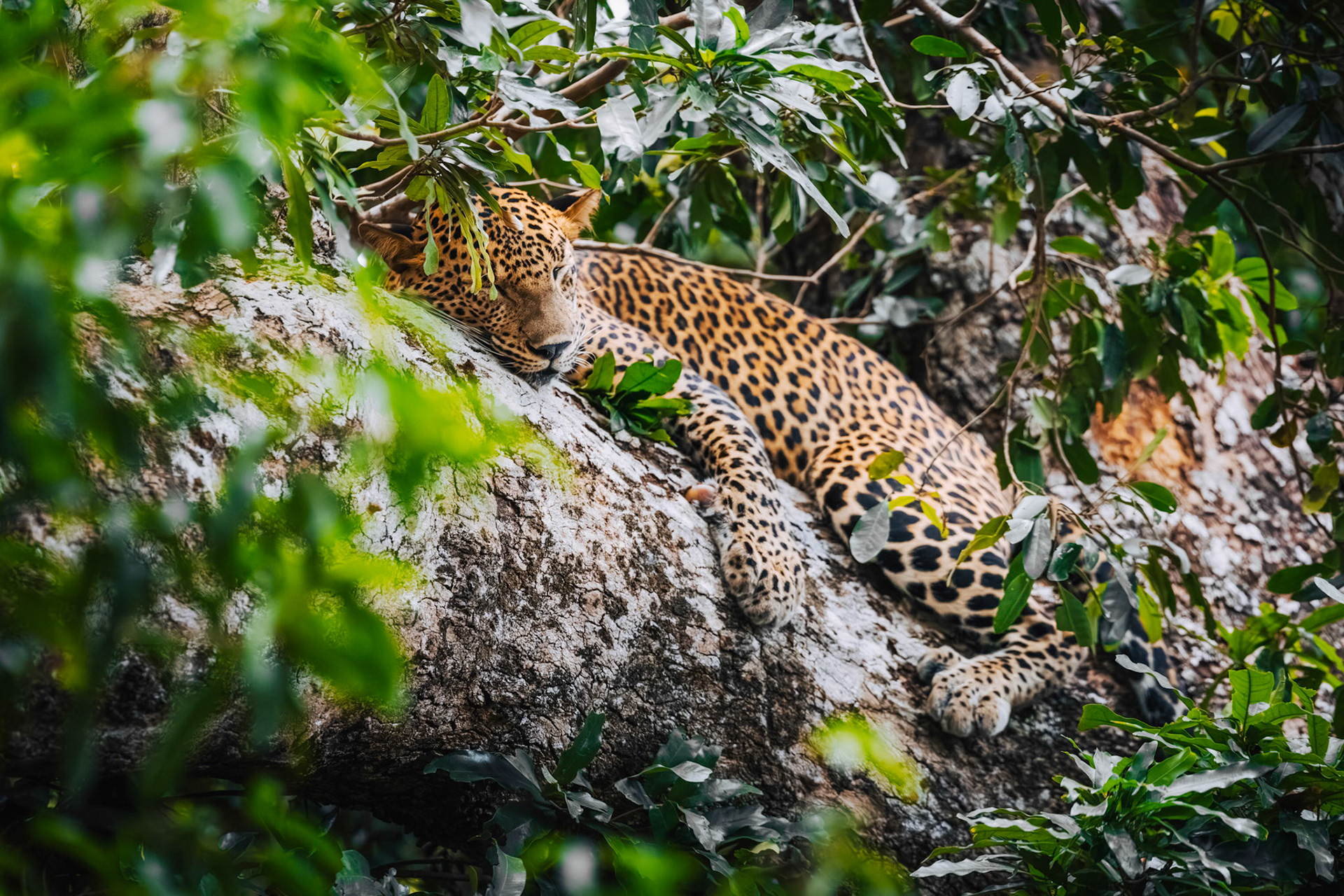
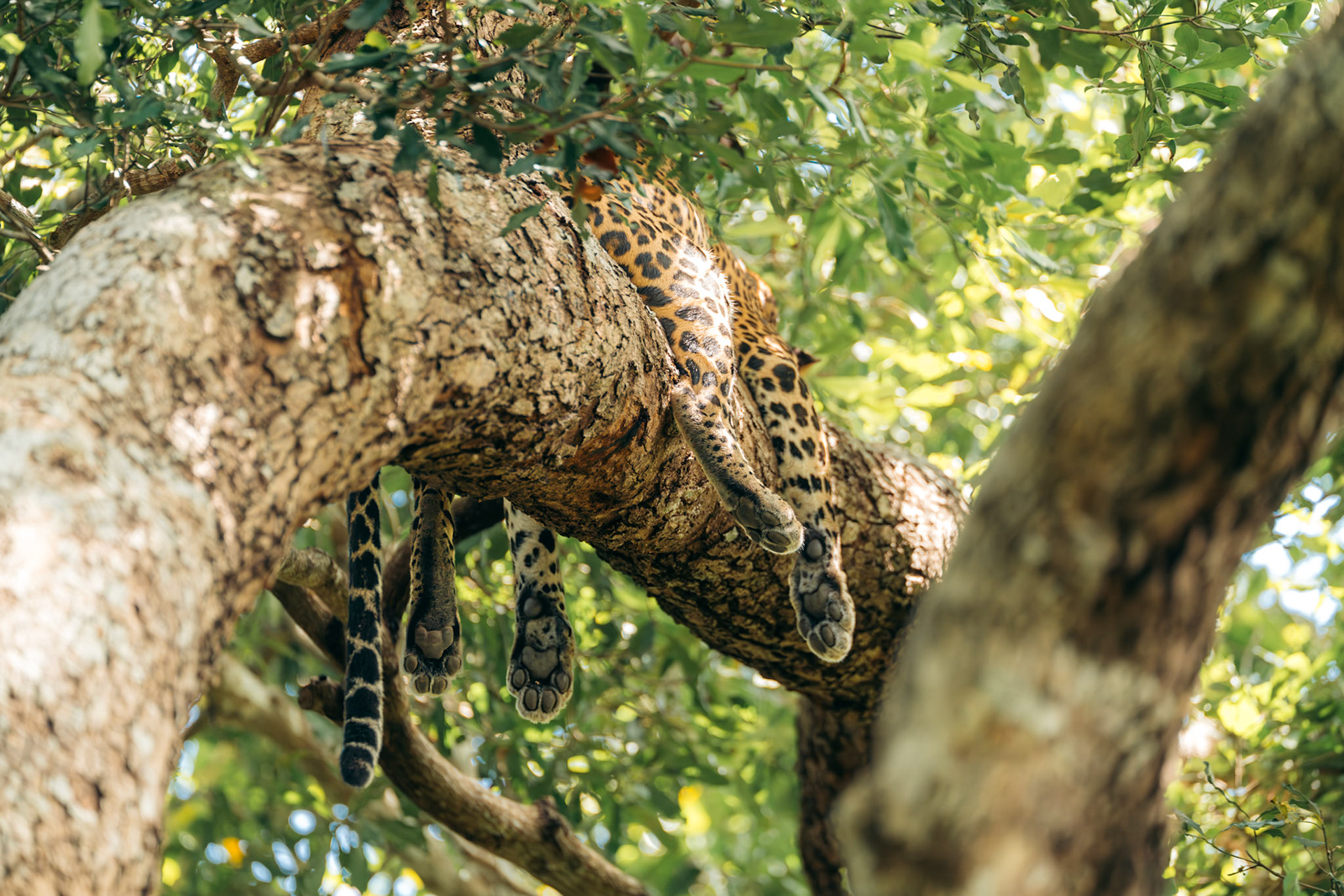
A lens that works in harmony with the scene — powerful yet discreet. I never missed a shot.
Rather than amplifying distance, the 300-600 seems to filter it. It forces you to slow down, to observe in silence, to choose carefully the details within a larger picture.
It’s a lens that teaches patience, yet remains ready for the unexpected, thanks to an autofocus that’s lightning-fast.
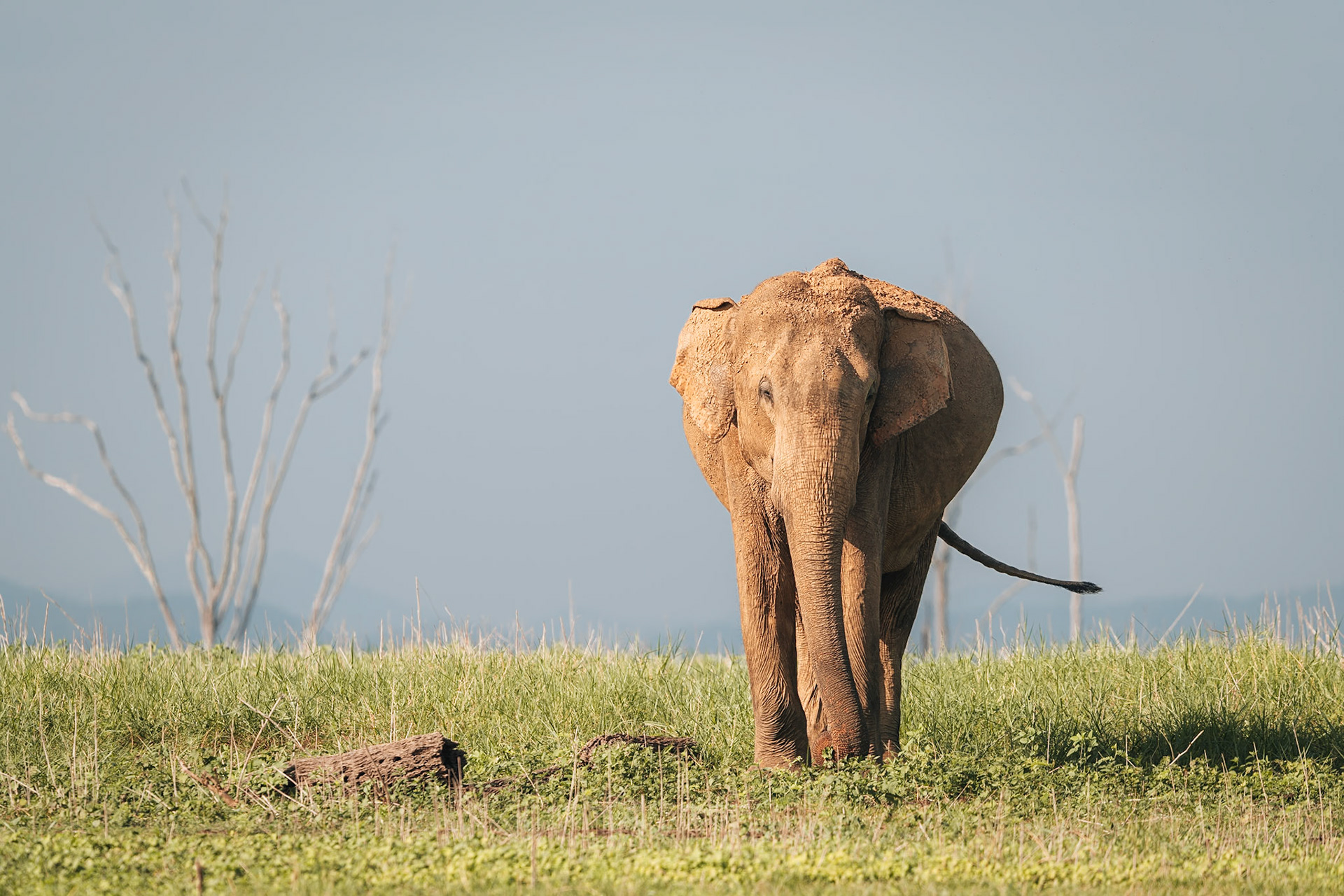
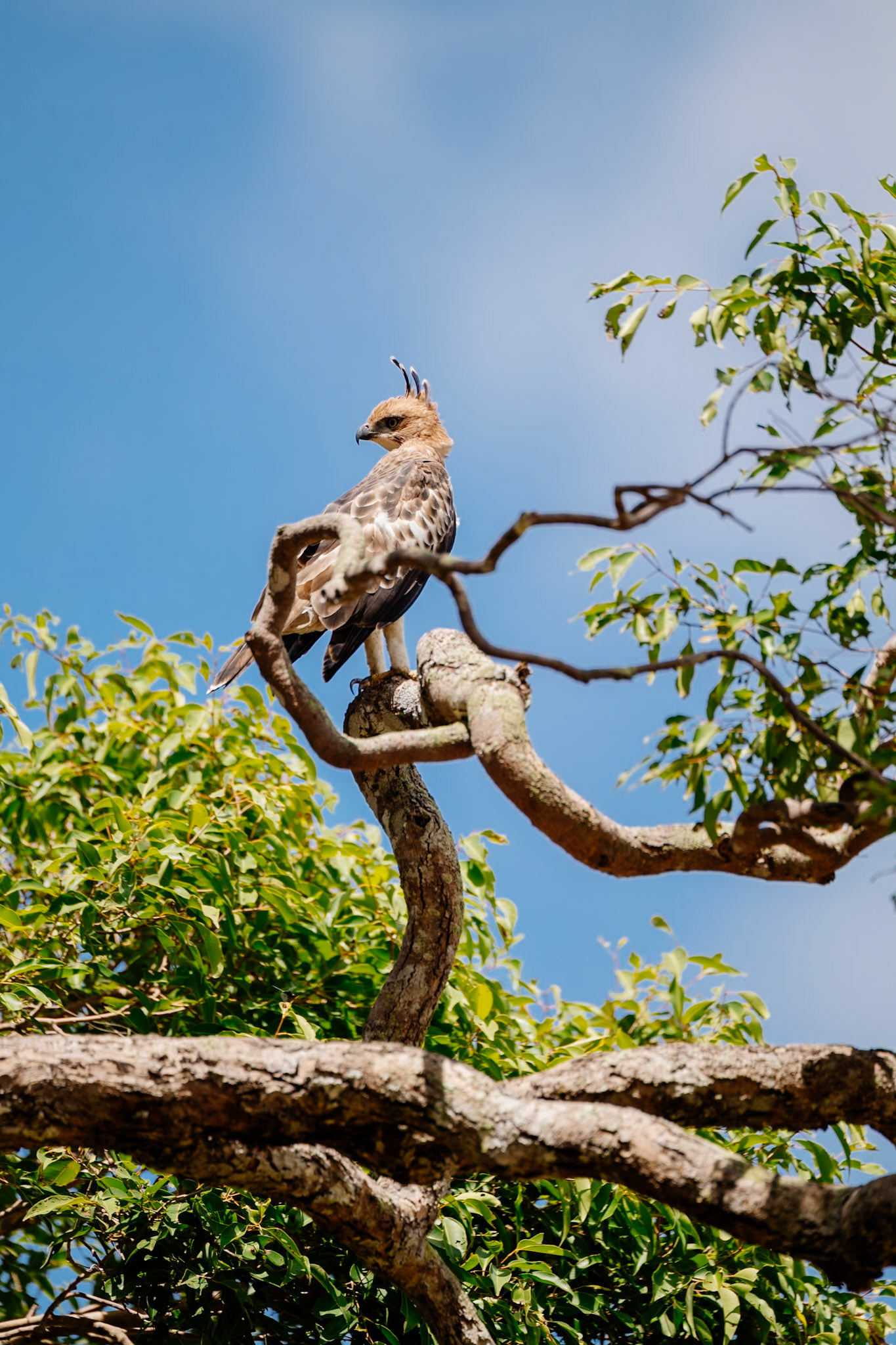
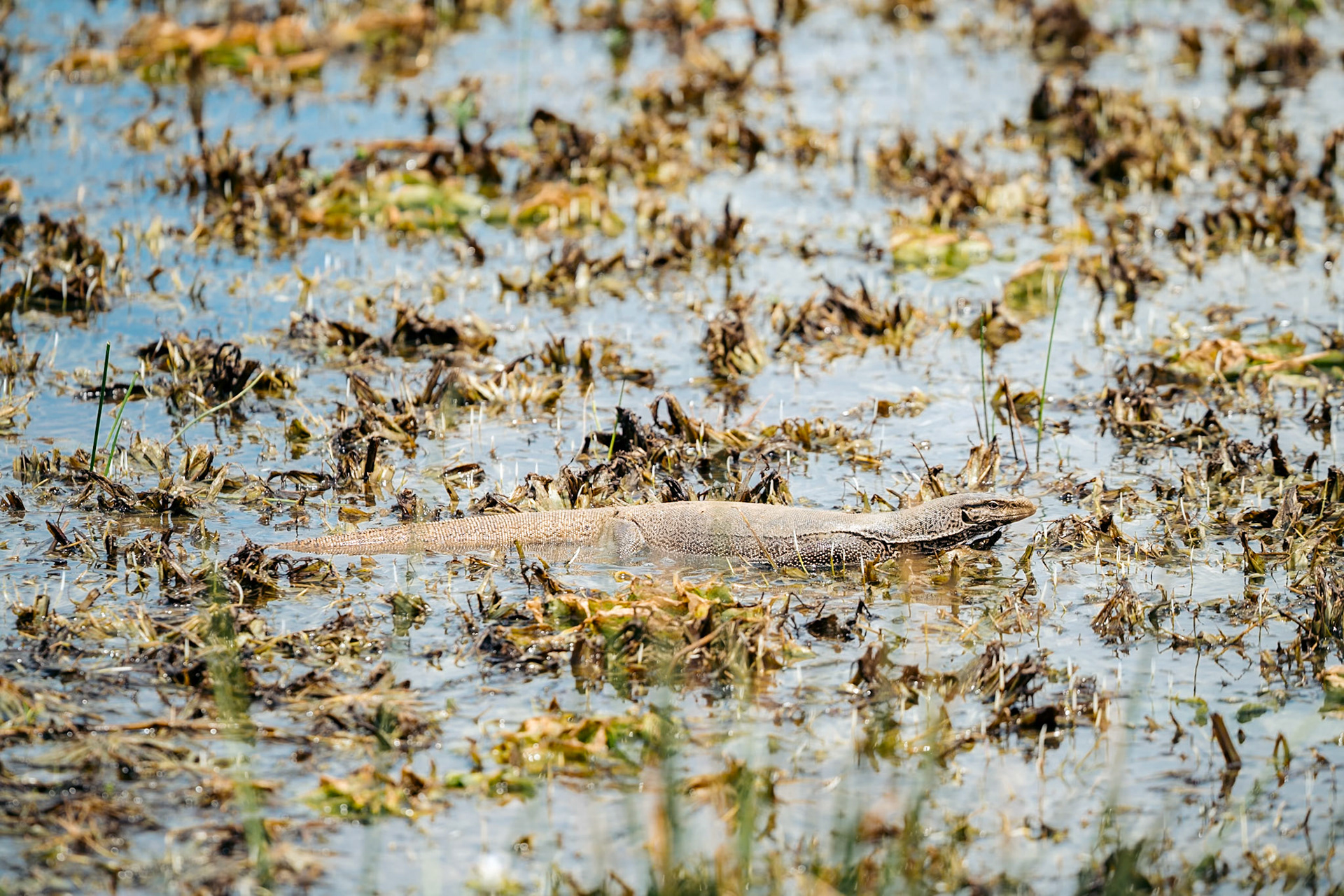
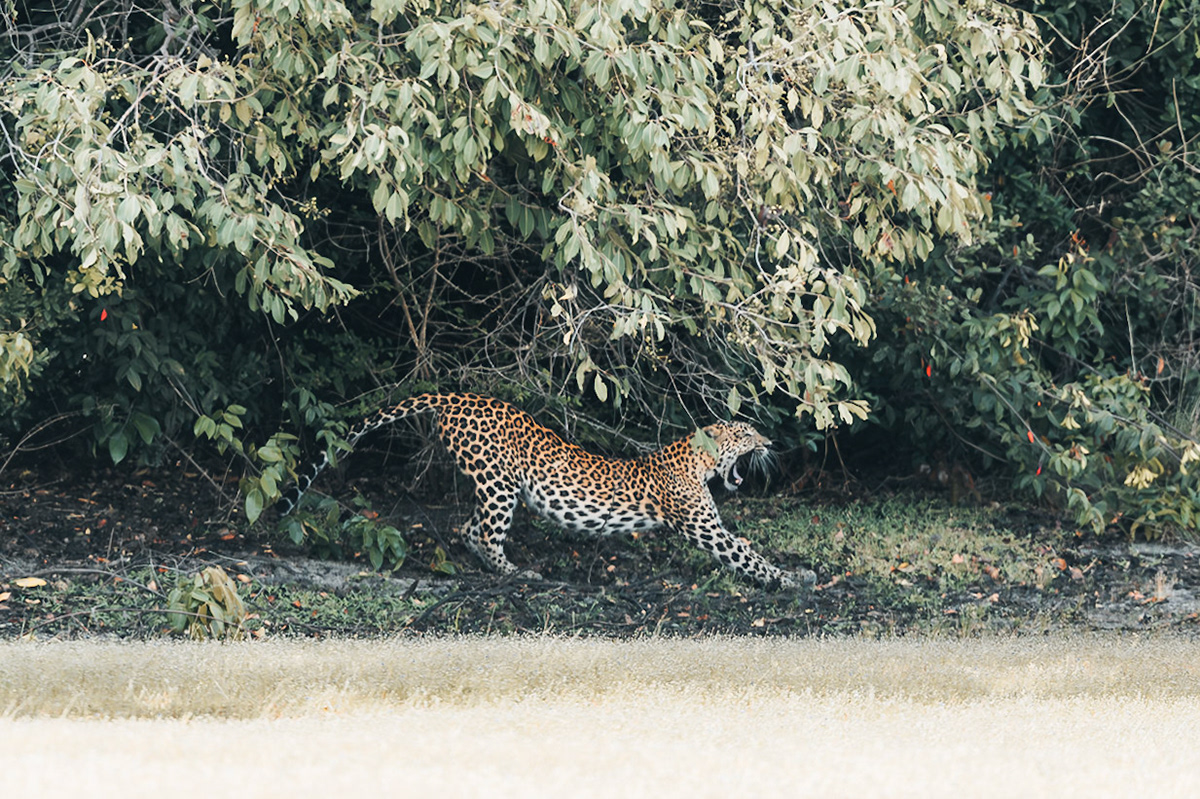
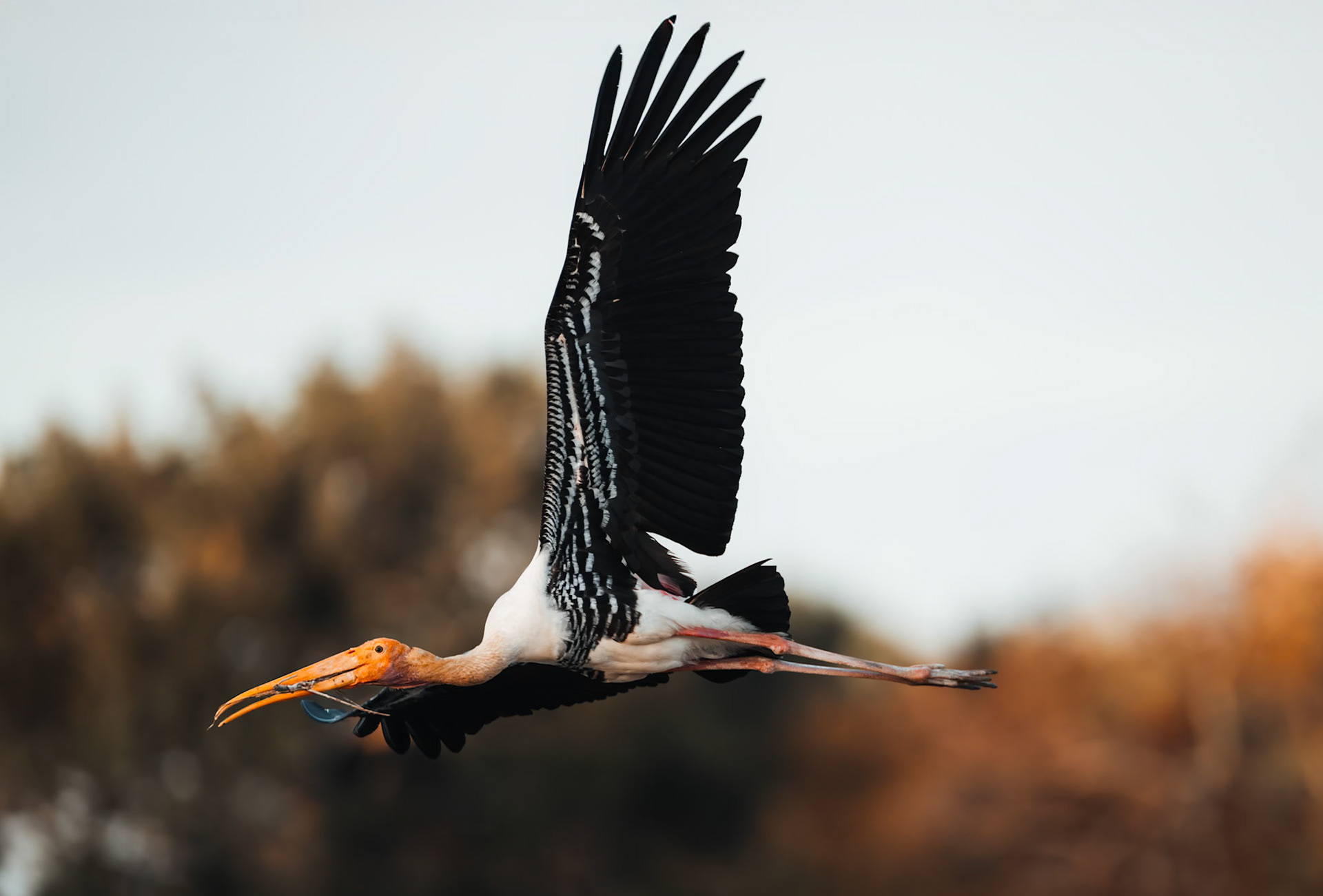
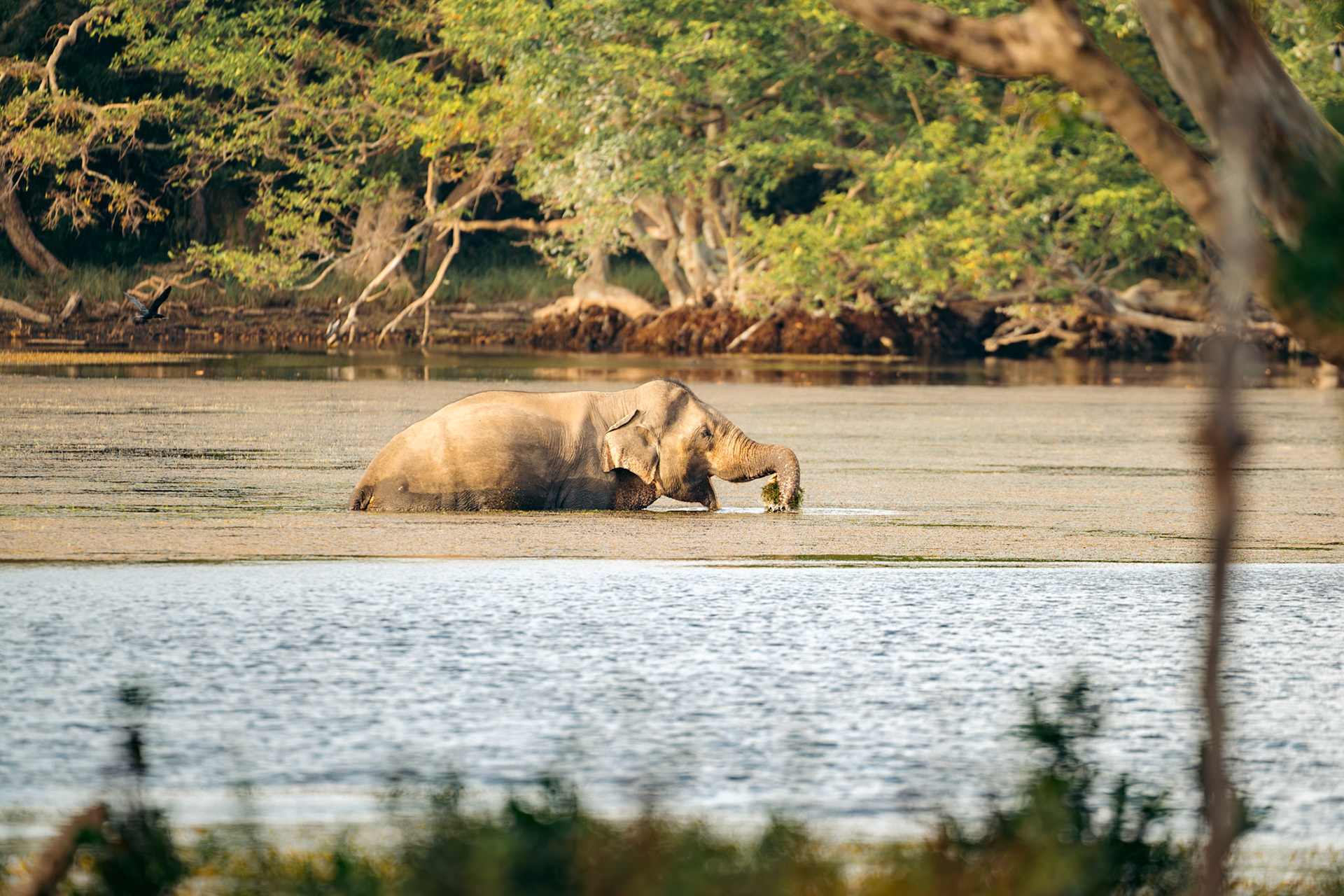
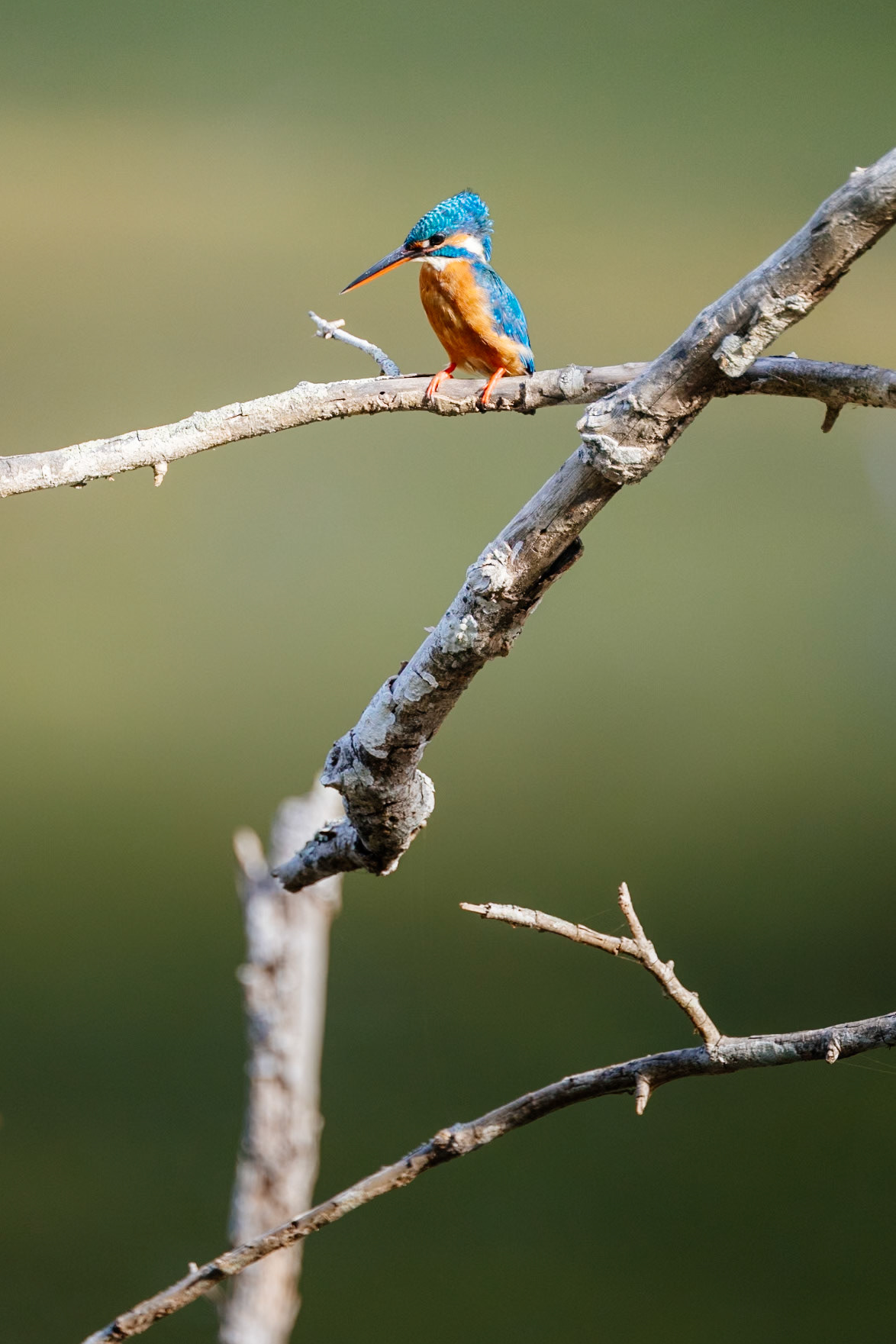
Every stage of the journey reveals something about the lens itself.
The SIGMA 300-600mm F4 DG OS | Sports is not merely a lens of power and reach — it’s an instrument of awareness.
It allows you to observe from afar without losing intimacy, to stay focused while everything moves around you, to see without leaving a trace.
Looking back at the images, I realize that this lens’s sharpness goes beyond the technical.
Each detail holds something of the moment — the density of the air, the warmth rising from the earth, the silence that follows a wingbeat.
The 300-600mm doesn’t just record what it sees — it preserves what is felt, as if the light itself carried memory, reminding us that sometimes distance is the most genuine form of closeness.
Francesco Riccardo Iacomino
Thank you!
